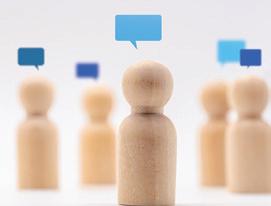PLATFORM FOR SUCCESS

Lendi Group has built a network of the future for all its broker channels and brands
 Brad Cramb
Lendi Group
Brad Cramb
Lendi Group








Lendi Group has built a network of the future for all its broker channels and brands
 Brad Cramb
Lendi Group
Brad Cramb
Lendi Group







Leading aggregators discuss how they’re supporting brokers with the challenges of helping borrowers in a tough lending market
MPA reveals the top 50 brokerages that have sharpened their competitive edge to build thriving businesses


Lendi Group chief distribution officer
Brad Cramb explains the impressive productivity benefits of its new Platform that can lead to deal-a-day brokers

Got a story or suggestion, or just want to find out some more information?
twitter.com/MPAMagazineAU
facebook.com/Mortgage ProfessionalAU
02 Editorial
In a tough economy, brokers can get borrowers ‘match ready’ for rising rates
04 Statistics
The ups and downs of the Australian housing market
06 Opinion
Why commercial broking needs a professional standards scheme

12 Refinancing
How banks are working with brokers to assist customers in a competitive refinance market
70 Brokerage insight
Provident Lending & Business Solutions is focused on helping SMEs flourish
72 Other life
FEATURES
How the growing non-bank sector is helping SMEs and the self-employed by taking a flexible approach to meeting their finance needs
Discover the aggregators most highly ranked by brokers for their service and support
Brokerage boss Matt Punter takes time out to protect beachgoers as a surf lifesaver

MPAMAG.COM/AU
NOW ONLINE:
Our daily newsletter. Keep on top of property market trends, business strategy, and what industry leaders have to say.
Who would want to be an economist right now?
In a period of heightened anticipation about what the Reserve Bank board will do on the first Tuesday of every month, there’s a lot of interest in economists’ predictions for the RBA’s next official cash rate move.
After 12 interest rate rises, and possibly a 13th by the time this edition of MPA has gone to print, it’s no surprise that brokers, bankers, aggregators, businesses and homeowners are looking to economists for guidance on when the rate-hiking cycle will end
But forecasting interest rates is notoriously difficult; economists have to rely on inflation data and other statistics that are often out of date by the time Reserve Bank governor Philip Lowe and his fellow board members meet to make their decision. Even the RBA has to rely on data that’s not in ‘real time’.
A case in point was the June OCR decision. Less than a month before the board met, economists from the big four banks all said the central bank would refrain from lifting interest rates, based on data the RBA had released and a slowdown in consumer spending. But exactly a week before the board meeting, the ABS released its monthly inflation figures for April, revealing that inflation had increased by 6.8% in the 12 months to April, up 0.5% from a 6.3% year-on-year rise in March.
www.mpamag.com/au
JULY 2023
EDITORIAL
Editor Antony Field Writers
Kim Champion, Mina Martin
Contributor
George Karam
Lead Production Editor
Roslyn Meredith
Production Editor
Allison Ingusan
ART & PRODUCTION
Designer Loiza Razon
Customer Success Manager
Isabella Concepcion
Customer Success Executive Shara Cruzat
SALES & MARKETING
Publisher Claire Tan
CORPORATE
Chief Executive Officer
Mike Shipley
Chief Operating Officer
George Walmsley
Chief Commercial Officer
Justin Kennedy
Chief Information Officer
Colin Chan
Chief Revenue Officer
Dane Taylor
Director – People and Culture
Julia Bookallil
EDITORIAL ENQUIRIES
tel: +612 8437 4784 antony.field@keymedia.com
SUBSCRIPTION ENQUIRIES
tel: +61 2 8311 5831 • fax: +61 2 8437 4753 subscriptions@keymedia.com.au
ADVERTISING ENQUIRIES claire.tan@keymedia.com
KM Business Information Australia Pty Ltd tel: +61 2 8437 4700 • fax: +61 2 9439 4599 www.keymedia.com
Australia, Canada, USA, UK, NZ and Asia
The Fair Work Commission also announced national minimum wages would increase by 5.75%, bringing further inflationary pressures, and it seems the RBA had little option but to lift the OCR by 25 basis points.
So, how can brokers give their customers any certainty about what the future holds in this current rate environment? The answer is they can’t. But what they can do is give clients reassurance and guidance and get them ‘match ready’ –especially those rolling off fixed rates onto higher variable rates – by advising them to consolidate debts, create a loan buffer, cut back on discretionary spending, and use brokers’ expertise to find them the best loan deals possible.
In the July edition of MPA, we explore how lenders and brokers work together in a tough economic environment to provide customers with access to the right home loans for their circumstances, through alt-doc lending and refinancing.
We also reveal the hot topics of discussion at our annual Aggregators Roundtable, as well as how brokers rated their aggregators in the 2023 Brokers on Aggregators survey; and we unveil Australia’s Top 50 Brokerages.
Antony Field, editor, MPAMortgageProfessionalAustralia is part of an international family of B2B publications and websites for the mortgage industry
AUSTRALIAN BROKER simon.kerslake@keymedia.com
T +61 2 8437 4786
NZ ADVISER alex.knowles@keymedia.com
T +61 2 8437 4708
CANADIAN MORTGAGE PROFESSIONAL john.mackenzie@keymedia.com

T +1 416 644 8740
MORTGAGEBROKERNEWS.CA corey.bahadur@keymedia.com
T +1 416 644 8740
MORTGAGE PROFESSIONAL AMERICA katie.wolpa@keymedia.com
T +1 720 316 7423
MORTGAGE INTRODUCER (UK) matt.bond@keymedia.com
T +44 7525 456869
Forecasting rates is notoriously difficult; economists rely on data that’s often out of date by the time the RBA meets
 Tiffany Angus TIFFANY FINANCE
Tiffany Angus TIFFANY FINANCE
$9.5trn
Total value of residential real estate
The share of total rental listings made up by properties rented for below $400 per week on realestate.com.au has declined to a new low, almost halving to just 16.2% in April this year from 30.2% a year prior, according to a PropTrack Market Insight Report
10.9 million
Number of residential dwellings
$2.2trn
Value of mortgage debt outstanding
The total number of dwellings approved in Australia slipped by 8.1% in April, in seasonally adjusted terms, following a 1% drop in March, ABS data shows. The result was driven by a 16.5% tumble in approvals for private sector dwellings excluding houses. Private sector house approvals dipped 3.8% in April, following a 3.7% decrease in March.
56.1%
Percentage of household wealth held in housing
Household spending rose year-on-year in March across all states and territories, with the ACT recording the largest increase, at 12.6%, while Queensland had the smallest rise in through-the-year spending, at 7%, ABS data shows.
THROUGH-THE-YEAR CHANGE* IN HOUSEHOLD SPENDING BY STATE/TERRITORY
National rental affordability fell in March, with 51.6% of income needed to service rent, up from 44.7% in March 2020. Across regions, only Melbourne saw a slight drop in the proportion of income needed, a CoreLogic-ANZ report shows.
PROPORTION OF INCOME NEEDED TO SERVICE NEW RENT (25TH PERCENTILE ANALYSIS)
Source: ANZ-CoreLogic HousingAffordabilityReport, May 2023
Social housing as a portion of housing stock has depleted over time, alongside a rise in demand from lower-income households in the private rental market. The share of Australian dwellings categorised as social housing fell from 4.7% to 4.1% over a period of 10 years, according to an ANZ-CoreLogic report.
SOCIAL HOUSING AS PORTION OF TOTAL NATIONAL DWELLING STOCK
AS A commercial broker, I have always been proud of our industry’s self-regulating framework. Self-regulation has allowed the expertise of brokers to manage practice rights within asset and commercial finance, creating an efficient and responsive financial system serving the needs of Australian SMEs.
CAFBA has long advocated that this selfregulating framework based on broker education ensures the best outcomes for commercial borrowers. By upskilling members, CAFBA’s rigorous education programs have provided the greatest protection against consumer harm. In 2019, this was validated by the banking royal commission, which found that there was no market failure in commercial finance or commercial finance broking, and no need for additional regulation.
Our industry, however, is now experiencing rapid change, with a range of non-bank lenders entering the market and a surge of brokers from other sectors looking to diversify into commercial broking, placing our selfregulating framework at risk. As brokers’ market share grows and more clients deal with more brokers, history tells us that the threat of regulation will soon follow.
While regulation may come with the best of intentions – to protect the consumer – it produces unintended consequences, often negatively affecting those it intends to protect, and is written by legislators with little real-life commercial experience. The most likely form of regulation for commercial broking would be a best interest duty overseen by ASIC. This would include substantial disclosures and prescribed trading practices, affecting the timely nature of commercial borrowing.
Small business needs an efficient and accessible finance system not bound by unnecessary

regulatory roadblocks. Access to finance is crucial for business to thrive, and it needs to be responsive and immediate.
Self-regulation works. AFCA data supports this, with very little customer dissatisfaction over asset and commercial broker dealings. The priority must be to ensure this selfregulatory framework continues.
CAFBA’s Self-Regulation Committee concluded that a professional standards scheme (PSS) was the most effective measure the industry could take to ensure the continued high standards of commercial broking and keep our self-regulating framework.
A PSS is a legal instrument that binds associations to monitor, enforce and improve the professional standards of members, and protect consumers of professional services.
their customers from unscrupulous practices.
To apply to the PSC, CAFBA will have to establish a limited liability insurance scheme, which will benefit CAFBA members through reduced professional indemnity insurance costs. Risks to consumers and the industry will be monitored and addressed through a risk management framework, and perceived risks addressed through continuous education delivered by the Education Council.
The benefits for stakeholders are obvious. The clear winner will be the commercial borrower, who will know that their CAFBA broker is a professional, bound to a high ethical standard, eminently skilled, and protected by professional indemnity insurance.
Commercial lenders will know that the CAFBA broker is suitably qualified and regulated by a profession that includes standards with a disciplinary framework. They will know the CAFBA broker places the needs of clients first and has appropriate risk measures to mitigate and identify risk in their business.
For aggregators, the PSS presents the opportunity to reimagine their value propositions to CAFBA brokers. The CAFBA accreditation reduces their operating risk and oversight requirement under their ASIC licence.
For CAFBA members, a PSS will distinguish us as recognised professionals, creating a signif-
Our approach is to regulate ourselves – to make CAFBA the regulator instead of ASIC.
This is achieved by reforming CAFBA from a member association to a regulator by having its standards and operations accepted by the Professional Standards Council (PSC) and signing up to its ongoing requirements, including effective risk management strategies and continuing PD programs, codes of ethics and conduct and integrity systems.
Many other industry associations operate under this model, including the CPA. Accountants belong to a governmentrecognised profession, and instead of having prescriptive legislation, they adhere to a set of operating and ethical standards that protect
icant distinction between our businesses and non-CAFBA member businesses, attracting more clients and a better calibre of staff.
Regulation in residential lending has led to greater consumer trust in brokers and higher broker market share – but at a great cost. We have a window of opportunity in commercial finance broking to set our own standards and execute change in the least disruptive way, evolving commercial broking from an industry into a profession.
Small business needs
To maintain industry self-regulation, CAFBA needs a professional standards scheme, says George Karam
IT’S BEEN two years since online broker platform Lendi merged with broker network Aussie Home Loans to create the largest retail mortgage broker in Australia.
Lendi Group chief distribution officer Brad Cramb says “creating the Aussie Platform builds on the legacy of Aussie’s success to date, while future-proofing the business. All Aussie brokers were live on Platform by the end of June, which was a major milestone for the merger”.
“Migrating almost 1,100 brokers onto a new system in a few months is an impressive feat, and it’s been all hands on deck behind the scenes,” Cramb says.
He says Lendi Group has “reimagined the future for all our channels and brands”.
“We’re building a thriving ecosystem – a place for brokers to start their career, build their career and grow their future. Our objective is deal-a-day brokers, thriving mobile businesses, a world-class franchise system –our network of the future.”
Cramb says when Aussie and Lendi joined forces in 2021, work immediately began on building the Aussie Platform.
The advantages of Platform are clear, he says. A digitised loan application process makes the experience more seamless for brokers and customers, with lodgement speeds almost four times industry averages.
“Platform’s key benefit is live connectivity,” Cramb says. “Platform’s interface allows
both broker and customer to work through the search, fact-find and application process together, in real time.
“Aussie brokers have shown a genuine desire to align to our vision of having the industry’s leading Platform. Make no mistake, it’s been a big change, and it’s taken a lot of work to get here, but our brokers have been invested in the journey, providing valuable feedback at every touchpoint, and we’re excited to watch them translate this new way
passes the Platform itself and the features and working models it powers – Associates, Journeys and Client Solutions.”
Cramb says Platform Plus tackles three problems facing brokers:
Cramb says scaling your operation is hard; not all leads are created equal. Lendi Group Journeys are an industry-first innovation, turning low-intent leads into high-intent
of working into business growth. This truly is a game changer for our network.”
Cramb says brokers are provided with the right technology, support and working models to be whatever they want, “whether that’s a home-based broker, a salaried broker, a mobile broker, a store broker, or the CEO of their own business”.
He says the working model of the future and the vehicle that will enable the group’s brokers to soar new heights is here now.
“We call it Platform Plus – which encom-
customers. Platform Plus and the Associates and Journeys models empower brokers to be hyper-efficient and to focus on high-value activities:
• Associates – the centralised Associates team make first contact with new and re-engaged enquiries, obtaining key information and pre-qualifying customers before booking them into a broker appointment.
• Associates upload payslips and other documents onto Platform, allowing
Cramb
“We’re building a thriving ecosystem – a place for brokers to start their career, build their career and grow their future. Our objective is deal-a-day brokers ... our network of the future”
Name: Brad Cramb
Job title: Chief distribution officer
Company: Lendi Group
Years in the industry: More than 20 years’ senior leadership experience; has worked at Aussie/Lendi Group since 2017

Fun fact: On the weekends, Cramb trades his business suit for his wetsuit and can be found chasing waves with his two sons
Highlight of working at Lendi Group: “Witnessing the coming together of Aussie and Lendi, and how readily our fantastic teams and network of brokers have embraced growth”
brokers to field appointments armed with the right information to have solutionsfocused conversations.
• Journeys – customers not ready to proceed are placed into specialised nurture journeys to receive ongoing, bespoke communications. At Lendi, over 50% of submissions arise from re-engagement via Journeys, so “we’re excited to see the impact this will have on our Aussie brokers”, says Cramb.
Cramb says changing policies, credit niches, compliance and multiple lender systems mean there’s a lot to navigate. “Enter our centralised Client Solutions team who remove and automate repetitive tasks for brokers”:
• Client Solutions provides loan processing support for brokers, taking loans through to settlement.
• Client Solutions agents can liaise with customers on the broker’s behalf.
• Platform powers Lendi Group’s proprietary Approval Confidence technology, directly integrating with lender decision engines, providing customers with a realtime indication of approval.
• Platform’s live connectivity and dual interface enable customers to lean on their brokers as much or as little as they want. Customers can upload documents onto Platform and check their application’s status.
Platform facilitates productivity and unlocks capacity, driving growth for brokers.
“Instead of spending time calling cold leads, processing paperwork, or sitting on hold with banks, brokers can focus on doing what they do best: directly interacting with customers to secure their homeownership dreams,” Cramb says. “For customers, the results are impressive – increased speed to lodgement and turbocharged time frames to unconditional approval.”
Cramb says Lendi home loan specialists
1992 Aussie takes on the big banks and brings competition to the mortgage industry
2005 Aussie retail is born – Aussie’s first store opens in Sunnybank, Queensland
2013 Lendi is established and ultimately becomes Australia’s #1 online home loan platform
May 2021 Industry powerhouses Aussie and Lendi merge to form Lendi Group
Nov 2022 Aussie brokers commence rolling onto the Lendi Platform
June 2023 The complete network of almost 1,100 brokers is fully operational by end June
July 2023 With the Platform Plus model already operational in the Lendi and Aussie mobile channels, rollout will commence in the retail channel
Platform Plus is the vehicle that will allow our brokers in all channels to become deala-day brokers.”
Platform Plus is designed to empower a franchisee to truly be the “CEO of their own business”, Cramb says.
• Agents are subject matter experts on one to two lenders so have an intimate knowledge of policy. Cramb says their ability to prepare applications in accordance with requirements is resulting in RMIs at less than half the industry average.
Customer expectations in a new age of technology
Cramb says it’s critical to overdeliver on the experience customers expect. “Platform is designed to be the nerve centre of our broker solution, with its intuitive industry-first customer interface, sales tools, calculators and integrated features,” he says.
are some of the industry’s most productive brokers, averaging 12 submissions a month –four times the industry average. “More than 20 are lodging a deal a day, a showcase of what is possible by harnessing the power of Platform.”
The magic combination of Platform Plus and Lendi Group’s Graduate Program is seeing new brokers achieve impressive results. “New brokers average eight submissions in their first eight weeks, and we have new-toindustry brokers settling over $50m in their first year,” Cramb says.
To achieve growth, brokers need the right infrastructure, Cramb says. “We believe
Lendi Group is working hard with its elected representatives on the Aussie Franchise Council to form a blueprint “to build upon our foundation as Australia’s No.1 retail broking network and become a truly world-class franchise network”.
“We’re already piloting interactive new touchpoints that will increase the options for driving new customers in-store.” The goal is for each Aussie store to have at least three retail brokers in addition to the franchisee.
“One thing remains constant – Lendi Group’s broker value proposition is stronger than ever and will continue to shine through, supporting brokers every step of the way.”
“Platform is designed to be the nerve centre of our broker solution, with its intuitive industry-first customer interface, sales tools, calculators and integrated features”
As
We provide a choice of service plans to better support brokers and their differing business needs.
IT’S NO surprise that many Australians are still struggling to adjust to a rising interest rate environment.
In 2021, Reserve Bank governor Philip Lowe said interest rates wouldn’t rise until 2024, and many homebuyers – reassured by Lowe’s words – purchased property believing they had plenty of breathing space financially. But pent-up consumer demand and greater post-COVID spending, labour shortages and supply chain problems pushed inflation beyond the target range of 2–3%, forcing the RBA to act far earlier than anticipated and increase the official cash rate in May 2022.
Since then, the cash rate has been lifted a dozen times – a rapid succession of hikes not seen for almost 30 years. It’s a hard pill to swallow for mortgage holders, when combined with the rising cost of living and wages not matching inflation.
Higher interest rates have encouraged many homeowners on variable mortgage rates to seek a better loan deal through their existing lenders or to explore other lenders. There are also an estimated 800,000 borrowers whose fixed rate loans are due to end over the next six to 12 months.
Mortgage brokers play an integral role as borrowers looking to refinance their home loans need the expertise of brokers to help them navigate a complex market.
To discuss current trends in refinancing, MPA spoke to ANZ Retail Broker general manager Natalie Smith; CommBank executive general manager home buying Michael Baumann; ING Australia head of sales and distribution Glenn Gibson, NAB executive broker distribution Adam Brown and Suncorp Bank head of broker partnerships Troy Fedder.
interest rates having on the demand for refinancing?
ANZ’s Natalie Smith says that over the last 12 months some households may have been feeling the effects of inflation and a rising rate environment.
“Australians feeling the higher cost of living may have already taken steps to ease the pres-
Refinancing volumes have lifted significantly compared to last year. The PEXA Refinance Index for the week ending 11 June 2023 shows volumes were up 8.2% for the month and were 16.7% higher than the same week in 2022. ABS lending indicators for April show that the value of refinancing for housing fell 9.2% but was still 14.2% higher than in April 2022. So, what impacts are rising inflation and
sure on their household budget by reducing discretionary spending or delaying major purchases,” she says.
“As mortgage repayments are usually the largest household expense, we can expect that borrowers will be considering options to reduce their interest costs and monthly repayments.”
Smith says many mortgage holders are expected to roll off fixed rates throughout 2023, with more to follow in 2024. “These

“We encourage customers to consider home loan features needed over the long term, such as flexibility on repayment dates or access to multiple offsets, and how their home loan can help achieve their property goals” Michael Baumann, CommBank
With homeowners facing the burden of rising interest rates – and thousands expecting to soon roll off fixed rates – banks are working closely with brokers to assist them and their customers when it comes to refinancing
customers may be looking for additional guidance now, to ensure that they have the right product for their situation and property goals in the future.”
CommBank’s Michael Baumann says that, with interest rates rising, customers have placed “a heightened focus on their home loan and the value they are getting from that loan and their lender more broadly”.

“Customers with fixed rate home loans are continuing to mature, with many taking the opportunity to reassess their needs and how their home loan supports their long-term goals,” he says.
Baumann says there has been a greater
focus on cashbacks recently, but customer research shows that borrowers’ refinancing considerations go beyond cashbacks.
“The research found that in addition to a low interest rate, borrowers are looking for an easy application process that offers them confidence quickly, and flexible and transparent in-life options to get the most value from their home loan,” Baumann says. “We see customers consider all these features, as well as incentives and offers, when refinancing.”
At ING, Gibson says great interest rates are certainly important but not the only thing borrowers consider when refinancing. Borrowers who refinance could also be:
• consolidating other debts (credit card, personal, car or other higher-interest loans) into one monthly repayment
• improving cash flow and affordability if they have experienced an unexpected life event or financial challenges
• seeking a different product or home loan that better suits their needs in the current environment, for example with interestonly repayments or an account with or without an offset
• needing access to equity
Adam Brown says NAB’s Consumer Sentiment Survey for Q1 2023 shows consumer
stress about rising living costs is at its highest level since late 2018, and in this environment “customers are looking to get a better deal where they can”.
Also, many fixed rate mortgages signed two years ago are reaching their expiry dates. NAB forecasts that refinance activity will peak at about $32bn in the six months to September 2023.
“As customers consider refinancing, many are turning to mortgage brokers for support in assessing their options, and brokers are doing a great job of helping customers to navigate the changes,” says Brown.
Fedder says Suncorp Bank is a net refinancer, “so we’re talking with brokers every day about refinance options for their customers”.
“Customers rolling off fixed rates are taking the opportunity to review their rates at this time, and Suncorp Bank has experienced an increase in customers refinancing across our home lending segments,” he says.

Broader cost of living impacts are also prompting some homeowners to shop around for a better home loan deal.
Fedder says the bank’s refinance options
receive great feedback, and brokers and their customers are encouraged to consider loan features that also save money.
“For example, our Home Package Plus option provides a range of features, including a 100% offset facility with up to nine subaccounts. Eligible home loans can also save with our Home Package Plus Annual Fee Refund, saving customers up to $11,250 over the life of a 30-year loan.”
Support for customers rolling off fixed rate loans
Brown says NAB continues to focus on building
relationships with its existing customers to offer them the right support and products for their financial goals and needs.
“We know they value our offering because 85% of those who have recently come off fixed rates have remained with NAB,” he says. “We are focused on being as proactive as possible on refinance to support customers and brokers.”
NAB has been making check-in calls to broker-introduced customers, Brown says. Customers also receive communications from NAB at key milestones for their mortgages, including in the lead-up to their fixed rate or interest-only expiry.
Refinance volume to 11 June 2023:
“As customers consider refinancing, many are turning to mortgage brokers for support in assessing their options, and brokers are doing a great job of helping customers to navigate the changes”
Adam Brown, NAB
Running a business can often feel like navigating the ocean without a map, a compass or a sail. To succeed you don’t just need intelligence and hard work, you need the right support and the right tools. With AFG you have a tried and tested partner by your side. One who can provide you with confidence, support, and the tools you need to grow your business, your dream and your future. afgonline.com.au
rolling onto a personalised Standard Variable Rate product, refixing all or a portion of the loan, or considering other repayment types. Information and access to these options are available to customers through their brokers or directly through self-service options, says Baumann.

“To help support our broker partners, we have continued to invest in our digital capabilities, including launching Your Loans earlier this year,” he says. “Through the CommBroker platform, brokers can quickly and easily see their customers’ fixed rate maturity dates as well as any discounts a customer might be eligible for post fixed rate maturity.”
In April 2023 in seasonally adjusted terms, the value of external refinancing fell: for total housing to $19.3bn, after a record high of $21.3bn in March. It was 14.2% higher year-on-year
Access to this information helps brokers have “detailed and robust discussions with their clients” to help them understand what’s next on their homeownership journey with CommBank.
Gibson says ING started reaching out to its fixed rate customers last year, following a well-thought-out process that involved preemptively talking to customers about budgeting and other helpful tools.
for owner-occupier housing to $13.0bn but was 13.5% higher year-on-year
for investor housing to $6.3bn but was 15.6% higher year-on-year
“The message conveyed in each of these interactions is for customers to get in touch with their broker to discuss their options,” Brown says. “This is all backed up with targeted proactive pricing offers for customers who are about to roll off their fixed rates.”
Fedder says Suncorp Bank is supporting brokers and their customers with competitive rates, fast turnarounds and clear decisions. “As customers rolling off fixed loans are taking the time to compare their options, providing a fast time to decision is important for good customer outcomes.”
Suncorp Bank provides provides a response in 48 business hours for its SunLight loans –
sometimes much faster, says Fedder. The system automatically identifies loans that meet the eligibility criteria and fast-tracks them for assessment.
Fedder says the bank’s experienced BDMs educate brokers to ensure they understand its products and features and how these can be maximised to benefit customers. “This includes things like the use of offset accounts or special offers that help customers save on annual fees, like our Home Package Plus Annual Fee Refund.”
Baumann says CommBank offers a range of flexible options at maturity to help meet customers’ needs and goals. These include
“As the time to fixed rate expiry drew nearer, the contact centre made outbound calls, talking to affected customers,” he says. “This was an important investment the bank wanted to make to ensure customers knew what interest rate they were facing, what the process involved and what options they had.”
Smith says it’s important that ANZ continues to provide a compelling proposition – for existing customers as well as those looking to refinance through a broker.
“Our existing customers want confidence that they’re receiving a good deal, so ANZ proactively contacts broker-introduced customers with expiring fixed rates at different points of their journey,” she says.
Eligible customers can opt to receive a discount on the applicable variable rate once their fixed rate expires, or to take advantage of ANZ’s current fixed rate offers. Smith says where customers seek to increase their loan or apply for further lending, they’ll be
referred to their broker in the first instance.
For new customers exploring a better home loan deal through their broker, Smith says ANZ has a streamlined OFI (Other Financial Institution) refinance process for home loans.
ANZ Simpler Switch is available to eligible customers switching to an equal home loan amount, where the minimum repayments on the new ANZ home loan are less than the current repayments on their OFI loan. “The process is now available to both eligible PAYG borrowers as well as self-employed customers who meet ANZ’s Company Wage Policy.”
There’s a growing trend of banks ceasing their cashback offers. At the time of print, ING, CommBank, Suncorp Bank and NAB had already stopped providing cashbacks, with ANZ the only major bank still offering them.
ING recently announced that its cashback offer would end on 30 June. “This is in response to changing market conditions and also a result of feedback received as part of our ongoing engagement with brokers,” Gibson says.
In terms of other benefits or tools to attract customers to refinancing, Gibson says ING offers competitive interest rates, new LVR bands that give customers more flexibility, great customer service, simple and straightforward home loan products that suit customers’ needs, equity, cash-out (top-up or increase), and the reassurance of banking with one of Australia’s most recommended banks.
Baumann says that in response to customer, broker and lender feedback, and with customers now focused on value, simplicity and certainty, CommBank decided to end cashback payments on new applications for home loan products from 1 June.
When considering their next home loan, CommBank customers are encouraged to think about the features they might need over the long term – “whether that’s flexibility
around their repayment date, or access to multiple offsets to save on interest, or leading digital tools and insights in the CommBank App” – as well as how their chosen home loan can help them achieve their property goals.
Baumann says, “I recently reached out to Sam White, executive chairman of LMG, who said the removal of cashbacks means a fairer pricing framework for both new and existing clients, as existing clients will no longer be subsidising cashbacks for new ones.”

He says White pointed out that “although cashbacks drove a lot of enquiry for brokers, they made the job of comparing loans less transparent. We [LMG] would rather advocate for lower overall rates that enable all customers to benefit, rather than some receive a ‘sugar hit’ up front.”
Suncorp Bank withdrew its cashback offer from the market in June, Fedder says. “We
them. Borrowers want to know whether a particular lender is the right match in terms of product and policy before they look at pricing and other incentives.
“We’ve made it easier for brokers to support customers to compare home loan rates, features and fees,” Smith says. “Our three Simpler Home Loans – Standard Variable, Fixed and Simplicity Plus – allow our customers to see their options more clearly and make financial decisions with greater understanding and confidence. Borrowers can still access great rates and discounts on standard variable loans.”
Brown says the market is changing quickly, with cashbacks having grown bigger and bigger over the last six to 12 months, favouring new-to-bank customers over existing ones. “They introduced complexity into the proposition that can influence our customers from
believe we can offer our customers and broker partners value beyond a cashback and still help them to save. We will continue to offer them leading service in the home lending space with consistently fast turnaround times and innovative products and services that meet their needs.”
Smith says ANZ continues to monitor the market to ensure that “our proposition, including products, price and other incentives, is appropriate and well placed to meet the needs of our customers”.
She adds that every borrower has a different set of circumstances and a different view of what the best-value loan looks like for
making the right financial decisions in favour of short-term incentives.”
NAB is very focused on the refinance market, Brown says, especially on retention of existing customers as well as attracting new customers. “We believe retention begins at onboarding; that’s been a big focus for us, and we know how important it is for customers and brokers. Our job is to make sure from the minute a customer comes in, they are treated like an NAB customer.”
Brown says the focus is on like-for-like refinancing and using technology to ensure a fast and seamless process for brokers and their customers.
“As customers rolling off fixed loans are taking the time to compare their options, providing a fast time to decision is important for good customer outcomes” Troy Fedder, Suncorp Bank
Fedder’s advice to brokers is to ensure they are guided by the best interests duty framework when seeking to retain or attract new customers. “By doing this, you make sure the customers’ priorities are always front of mind,” he says.
“Don’t underestimate an early discussion with your BDM. They’re your best resource to confirm the lender’s offering is the right fit for the customer. BDMs also support brokers to
ence that brokers have to offer,” she says.
To better help customers compare options, brokers can find current product information, rates and offers on the ANZ Broker Portal and anz.com, Smith says. The ANZ Home Loan Offer Selection tool, a digital process available through the ANZ Broker Portal, is also a convenient way for brokers to request home offers for their customers, saving time and creating a better borrower experience.
Gibson says brokers are always conducting health checks with their customers, and he highlights the importance of doing this on a regular basis.
“Customers’ circumstances may change over time,” he says. “They could have moved on into a different life stage compared to the initial time they first got their home loan, and their needs would have also changed.”
Gibson says brokers who provide excellent pre- and post-settlement customer service invariably get referrals for new business from their existing clients.
Baumann says CommBank has a range of tools to help broker partners best serve their customers. The bank recently launched FASTRefi® for brokers, which means eligible OFI loans can be refinanced within a few days of receiving a customer’s signed loan documents.
structure the loan to deliver a great experience for their customer.”
Brown says customers are increasingly turning to brokers as trusted advisers who can assist them in sourcing a home loan that suits their needs. “Brokers have been doing a great job of supporting customers in getting great outcomes for their home lending needs.”

Brokers working to attract and retain customers in this evolving environment need tools and support from lenders, Brown says, so NAB has invested in technology to ensure fast and seamless processes, great products and policies, and competitive pricing and offers for every customer.
Smith points out that no matter their circumstances, customers want to deal with brokers who understand their needs, provide accurate information and explain loan options clearly. “Whilst borrowers are reviewing their loans more regularly, they still value the support, choice and conveni-
“We’ve seen that some brokers are increasingly working with self-employed customers,” Smith says. “Where these customers have a home lending need, we have a range of income verification options for self-employed applicants.”
Baumann says the relationships brokers have with their customers can add immense value to customers who might be considering refinancing. “The knowledge that brokers have of each client’s needs and circumstances leads to informed discussions and recommendations around the different home loan options that could help meet the customer’s property investment goals.”
For new customers, Baumann says brokers also add value through their knowledge and ability to consider various lenders that might suit a customer’s needs. “This knowledge extends past just home loan products and includes knowledge of the unique offerings from different lenders.”
“Thanks to FASTRefi®, customers can obtain their new CommBank home loan within days of the bank receiving the customer’s signed loan documents.”
For existing customers, brokers can take advantage of Your Loans – a new self-service tool in CommBroker providing greater portfolio visibility, including each customer’s key post-settlement information all in one place.
Baumann says recent Your Loan enhancements allow brokers to filter their customers based on their fixed rate maturity dates and get an overview highlighting any discounts customers may be eligible for.
Smith says ANZ has several streamlined processes for brokers to ensure fast and efficient refinancing. These include Simpler Switch, which provides a faster turnaround time for brokers’ customers, with less paperwork. Using comprehensive credit reporting to verify the customer’s ability to repay their existing commitments means there is no need to supply any income documents as part of an eligible application.
“Brokers are always conducting health checks with their customers, and this highlights the importance of this activity, because customers’ circumstances may change over time”
Glenn Gibson, ING Australia
Self-employed customers with both business and home lending needs can take advantage of ANZ’s Rapid Refinance process, providing a single decision point for assessment when refinancing both business lending (up to $1m) and home loans, Smith says.

“We’ve also introduced new tools for brokers so that we can continue working better together to deliver for home loan customers. For example, ANZ’s Broker Chat service is now available to support broker home loan enquiries from submission to post-settlement.”
Brown says NAB has made significant investments in technology. “Our investment in a digital self-serviced capability enables customers to make simple changes such as fixing and splitting loans on their own via the NAB app.”
Recent enhancements to the Instant Pricing Tool streamline the process for brokers repricing NAB home loans by prefilling existing customer and account information to make submissions more accurate and quicker to complete.
With economic conditions and customer circumstances changing rapidly, Brown says brokers have an important role to play in ensuring their customers continue to get great outcomes from their home lending.
“As the bank behind the broker, NAB is constantly improving its processes to make life easier for brokers so they can focus their energy on their businesses and building longlasting relationships with customers.”
Fedder says Suncorp Bank offers FASTRefi®, an alternative to traditional refinancing that
helps eligible customers move to their new loan sooner by funding the outgoing loan prior to settlement.
“Customers can start experiencing the benefits of the new loan sooner, be that a more competitive rate or loan features that are better suited to their needs,” Fedder says.
Suncorp Bank also offers an Instant Pricing Tool, he says. This is available on the Suncorp Broker Portal and helps brokers quickly access the best discretionary price for new personal home lending.
“Our existing customers want confidence that they’re receiving a good deal, so ANZ proactively contacts broker-introduced customers with expiring fixed rates at different points of their journey”
Natalie Smith, ANZ

Australia’s best mortgage brokerages are refining their strategies and increasing their competitive advantage to stay ahead



WHILE THE market presented uncertainties, MPA’s Top Brokerages of 2023 sharpened their competitive edge, which enabled them to thrive in an increasingly

$1.32bn
challenging landscape. The top 50-ranked mortgage brokerages are at the forefront of positive trends and business growth.
MPA’s detailed survey and research
Average total loan book value 85% Average conversion rate 13.3
Average number of years in operation $538m
Average total settlements from 1 January to 31 December 2022
14
Average number of loan writers
revealed the following general trends across the Top Brokerages:
• an increase in the average total loan book value
• an improvement in average total settlements
• a slight increase in conversion rates
These results show that when challenges and opportunities arise, the Top Brokerages
“With competition increasing in the loan market, providing excellent customer service can help you stand out and build long-term relationships”
Gerard Tiffen, Tiffen & Co
Bankwest has the ambition to be the best broker bank in Australia and continues to support brokers in the critical role they play in improving customers’ financial wellbeing across the country. This is one of the many reasons why brilliant brokers choose Bankwest.

refine their unique value propositions to:
• leverage technology to scale their businesses
• prioritise staff development and internal growth
• attract aspiring young brokers to the industry
• diversify their loan portfolios
• exceed clients’ customer service expectations
As one of the original brokerages in Australia since 1998, widely acclaimed Tiffen & Co affirms its longevity and its culture that values every employee and customer “like they are the most important person in the world” as the primary drivers of its success. Its people, some of whom have been with the company for decades, combined with

a business philosophy that views every customer as an opportunity to build a longlasting relationship, give this multi-awardwinning brokerage its competitive edge.
“Treating your people exceptionally well and taking care of them can help you overcome the challenges that organisations are experiencing with people leaving or having a hard time attracting staff,” says managing director Gerard Tiffen, who leads the sales and administration team with director David Friend.

The Canberra-based brokerage:
• ranks No. 4 on MPA’s Top Brokerages list

• boasts the highest conversion rate among the 50 winners, at 98%
Tiffen notes that the capital city’s market thrives due to supply and demand despite rising interest rates. The brokerage’s stellar reputation and stable group of staff have earned customers’ trust.
To find the Top Brokerages of 2023, MPA invited Australian brokerages to submit their figures for the period 1 January to 31 December 2022. The online form also asked for details such as the number of active brokers working at each brokerage, as well as its total loan book value and conversion rate.
To be eligible, brokerages needed to have five or more loan writers in a single office headquartered in Australia. Aggregator information was also provided by applicants, and their aggregators were then required to verify the details submitted.
The final ranking is weighted across three areas: total loan book size, total settlements in the specified 12-month period, and conversion rate. Each brokerage was ranked in each of these areas, and the ranks were then combined to produce a final tally.
“Australia’s broking market is getting better and better. Our reputation as an industry is growing, and there’s a greater awareness of the services we provide,” says Tiffen. “As long
“You need to have the right team to support your activities”
Sean Murphy, My Mortgage FreedomThird Party Banking
as you’re here daily and doing the right thing by people, you’ll succeed.”
The brokerage has excelled at establishing a solid network of contacts among clients, lenders, real estate agents and other professionals. That has allowed the business to attract new clients and stay up to date on changes that come quickly.
Reflecting on the future, Tiffen explains that it’s “business as usual” but the brokerage has embarked on a strategy to attract young people into the industry. It has hired several candidates who are being trained from the ground up, processing loans and participating in networking groups.
“It’s about having a strategy for where the company is going,” Tiffen says. “It’s hard to attract young people to become brokers, but we have hired some candidates, and hopefully they will become leaders one day.”

The secret to multi-award-winning My Mortgage Freedom’s robust business model is its dedicated team.
The South Melbourne-based brokerage:
• ranks No. 7 (jointly) on MPA’s list
• has a 93% conversion rate of loans settled or written
“The team that we have on board determines whether we’re going to be successful for that year,” says director Sean Murphy. “The better the team we have, the better we perform.”
The brokerage also enjoys a competitive edge in its technology stack, for which no expense is spared. In 2021, the team built a proprietary interest rate tracking platform, the first in Australia to be available directly to consumers. That tech investment has also
“Take a proactive approach to everything that you do”
Anthony Alabakov, My Mortgage Freedom
paved the way for beneficial relationships with referral partners and driven an expansion of the brokerage’s client base.
“When the interest rates started moving, the platform took off,” says Murphy.
When the going gets tough, as it has for many in the industry with rising interest rates and a shortage of stock, the best mortgage brokerage takes a proactive approach to innovating ways to improve a client’s situation.
The team’s motto is to push twice as hard, believing that overcoming challenges will make it easier to reach the next level. As a brokerage, My Mortgage Freedom is committed to exceeding client expectations by consistently going above and beyond. This dedication to exceptional service is a cornerstone of its approach.
facets of finance, including residential and commercial development.
“We have quite a few people on the team getting to the point where they’re ready to take that next step in their career,” says Alabakov. “That’s how we’ve scaled the business through internal growth and development, so that’s exciting for us.”
According to those in the industry, the driving force behind award-winning Infinity Group Australia is a force to be reckoned with. Along with partner Rebecca Holm, Graeme Holm, known as The Money Mentor, is a respected financial educator, motivational speaker and author of The Money Mentor: How to Pay Off Your
and NSW, Infinity Group Australia:
• ranks No. 20 on MPA’s list
• has an 89% conversion rate
The brokerage’s laser-like focus guides clients to become mortgage-free through strategies such as its debt reduction service, which includes one-on-one coaching with trained staff and client accountability for their spending.
“We’ve had clients pay off their mortgages in record time,” Gandhi says. “We help clients understand what they’re spending on because, when life gets busy, people spend money without realising they’re putting themselves in a bigger hole.”
Infinity Group Australia’s business model appears to be immune to the prevalent challenge of rising interest rates. It has never focused on interest rate increases; instead, it has prioritised structuring mortgages correctly and giving clients the tools to pay down their debt.
“While it’s been a challenge for other businesses, we’ve thrived in this environment because our customers are still achieving results in reducing their debt,” Gandhi says. “No one in the industry is doing anything similar to this.”
“It’s a stressful process when you’re going through a finance application, so we make it as painless and seamless as possible and gain our clients’ trust,” CEO Anthony Alabakov says.
The brokerage has also distinguished itself with staff development and training. It prioritises keeping staff motivated with paths to career progression and has overcome the hurdles of a tight labour market by hiring individuals who fit its culture.
My Mortgage Freedom has scaled its business through internal growth and development, and its specialist brokers cater to all
The brokerage’s value proposition is a unique differentiator, aiming to help as many people as possible pay off their mortgages as quickly as possible while building wealth and securing a good retirement.
“That’s always been his vision, and he thinks outside the box,” says senior credit manager Chris Gandhi. “We’re not a standard brokerage firm where we do things normally.”

With four offices in major city centres across the country, including in Queensland
The brokerage continues to grow quickly, driven by Graeme Holm’s YouTube webinars, which attract new clients. Additional staff have been brought on board to accommodate the surge on the brokerage’s investment side.
The 2023 Top Brokerages all display a shared ability to:

• sustain and strengthen their competitive advantages
• safeguard their legacies by proactively seizing opportunities
• adapt to market shifts and innovate
“Identify the client’s needs, goals and objectives and devise a strategy relevant to that client”
Chris Gandhi, Infinity Group Australia

Simplicity Loans & Advisory (SLA) dethroned a two-time champ to claim the prestigious title of MPA’s Top Brokerage 2023. This feat is unsurprising given the brokerage’s burgeoning trophy cabinet, a testament to the drive and passion of its highly motivated team.
Alongside an internal culture of engagement and excellence, training and mentoring are prioritised by SLA's leadership, which has helped cultivate strong relationships with lenders. All these initiatives are solely targeted at delivering the optimum solutions for clients.
“The ethos that underpins what we do is a focus on what we’re good at, and we hire people who have a passion for the commercial side and are motivated by a part of the market that moves, evolves and twists and turns a bit more,” says general manager Ryan Nelson.
While technology is high on the agenda, Nelson is keen to stress that the mortgage business is a relationship game, and SLA’s outstanding success and growth lie with its people.
“What we want is for our people to have the time to build relationships, to do the work quickly and to give our customers a great experience while being confident that the technology is there to help them,” he says.
SLA’s reputation and continuous growth are magnets for aspiring commercial brokers, allowing the brokerage to attract the best in the field.
Senior commercial associate Joshua Diab joined SLA three years ago and works directly with co-managing director Jean-Pierre Gortan, who ranked No. 1 in MPA’s Top Commercial Brokers of 2023. SLA’s team dominated this year’s
list, with four of its brokers also receiving distinguished recognition.
“We work as a team, and his [Gortan’s] success is mine, and mine is his,” says Diab of the brokerage’s collegial culture. “We’re committed to excellence, and everything we do is about innovation and pushing boundaries; we like creating unique opportunities for our clients and making sure that their solutions are our solutions.”
Part of the reason SLA’s internal processes are so efficient is because the brokerage acknowledges all of its staff’s capabilities and contributions and then offers them a voice in the decisionmaking process.
Nelson notes how the brokerage’s leaders engaged the entire team to develop new corporate values during its exponential growth.
“We decided to bring everybody into the tent, and we defined our corporate values by what the staff felt was important and appropriate,” he says. “I think that’s a cool thing when you’re the size we are and you’re still able to do that.”
Even demanding market pressures have not deterred SLA from setting new standards of excellence. The brokerage has branched out to have a presence in Victoria and serve clients nationally from locations in Sydney, Melbourne and Brisbane.
“There’s a lot of pressure on you as the broker, but no more pressure than what the client feels,” Nelson says. “I think the best thing you can do as a broker in any market is to walk with empathy. Take some time to peel the onion and really understand what the client is trying to achieve and what problems they face – and delve into that to build a rapport with them.”
Diab adds that the market is dynamic
Phone: 1300 022 022
Email: enquiries@simplicity.net.au
Website: simplicity.net.au
and the team’s ability to adapt to changing conditions depends on solid relationships.
“We ensure that we’re providing the best solution for the client,” he says.
Another key driver of the brokerage’s success is its sophisticated understanding of the forces at play in the Australian market, characterised as fast-moving by Nelson and Diab.
“It wasn’t that long ago that non-bank and private lending was a real unknown, and to see it explode in the past few years has been interesting,” says Nelson. “Knowing the lenders that will deliver what they say they’ve got and with whom you’ve built a relationship is key to navigating the market.”
In Diab’s experience, putting himself in the client’s shoes and going on the journey alongside them will only strengthen business relationships when headwinds subside.
Nelson also highlights how he’s resolutely focused on the basics to ensure the firm’s prosperity continues.
“If you stick to what you know and what you’re good at and find like-minded people, that’s the core of what drives our success,” he says.
$3.46bn
Total loan book value (all loan types)
$1.35bn
Total value of settlements (all loan types) from 1 January to 31 December 2022
92%
Conversion rate of loans settled or written


Self-employed people and SME owners can often find it difficult to secure loans from banks due to their varying income, but non-bank lenders are offering these customers and their brokers a flexible alternative
RISING INTEREST rates, high inflation, supply chain issues and labour shortages mean sole traders and small business owners are doing it tough.
NAB’s Monthly Business Survey shows that business conditions continued to ease in May, with notable declines across trading, profitability and employment.
ABS data on April business turnover paints a similar picture – turnover fell in nine of 12 industries. Higher interest rates and inflation are also affecting lending. ABS lending indicators for April show the value of new loan commitments for housing fell 2.9%.
On top of these challenges, SME owners and the self-employed often face obstacles from banks when it comes to obtaining finance to buy property or grow their businesses.
Unlike PAYG ‘vanilla’ applicants, customers in this sector don’t tick neat boxes when it comes to steady income from fortnightly or monthly pay cheques. This is where alt-doc loans offered by non-bank lenders can provide a fast, efficient solution that considers
each borrower’s unique circumstances.
MPA approached leading non-banks to explain the advantages of alt-doc loans for brokers and their clients. We spoke to Thinktank general manager partnerships and distribution Peter Vala, La Trobe Financial chief lending officer Cory Bannister, Pepper Money general manager mortgages and commercial lending Barry Saoud, RedZed managing director Evan Dwyer, Resimac regional sales manager Rodney Cottam, and Prospa co-founder and chief revenue officer Beau Bertoli.

Vala says an alt-doc loan, also known at Thinktank as a mid-doc or quick-doc loan, provides a pathway for self-employed and SME customers who may not be able to or simply prefer not to have to satisfy typical loan application requirements.
“While full-doc loans often require the most recent Notice of Assessment along with detailed salary, bonus and overtime
evidence, this type of information may not be readily available for self-employed individuals, or takes valuable time to get together,” Vala says. “Providing complete financial details may also be challenging for several reasons, such as experiencing a material change in trading income, or a delay in completing tax returns.”
Alt-doc loans offer greater flexibility for these borrowers, Vala says, as the lender will accept alternative forms of income verification to satisfy serviceability requirements.
La Trobe Financial’s Bannister says, “Simply put, it’s using alternative methods to verify income that are outside of the traditional tax returns, Notices of Assessment and
company financials. All other aspects of the assessment process are the same.”
He says there are often two main drivers for borrowers seeking alt-doc solutions.

Firstly, financial statements do not always
reflect the full extent of a borrower’s “capacity to repay”. Under the tax system, selfemployed workers are incentivised to minimise reportable earnings and maximise reportable expenses, in turn reducing their
“taxable income” and therefore their borrowing capacity, Bannister says.
The second factor is that complex financial statements can slow the approval process dramatically. The complexity of a self-employed borrower’s financial position can mean it often takes brokers many hours of work to accurately detail the appropriate content in a loan submission, which in turn slows the time to approval as credit analysts have to break down the financial documents.
Bannister says that when a borrower uses alternative documentation, namely an accountant’s written certification, the analysis of income has already been completed by someone who knows their financial position better than anyone – their accountant – which saves time for both the broker and borrower.
Saoud, from Pepper Money, says Australia is often seen as the land of a “fair go”, with millions of self-employed people working on their own passion projects and businesses. “But when it comes to getting a mortgage, these borrowers may not have the usual PAYG or income documentation to prove their income,” he says.
It’s not just the self-employed; it also affects someone who earns income differently, Saoud says. “For example, a contractor or seasonal worker, or a property investor earning rental income from their portfolio. Or it could be business owners looking to consolidate business debt, pay outstanding tax debts or [get] help with cash flow.”
RedZed’s Dwyer says alt-doc loans enable customers without traditional PAYG income, such as the self-employed, to apply for a loan using alternative methods to prove their earnings. He says alt-doc solutions are commonly used by self-employed sole traders, small business owners and those who own multiple complex business entities, “who are looking to grow, consolidate debt or improve cash flow”.
“At RedZed, we maintain a holistic view of business and income, and understand that

“We are determined to help each and every broker to achieve their business goals. If it’s to write more alt-doc loans, let our Lite Doc® product suite help you get there” Cory Bannister, La Trobe Financial
the self-employed borrower is the one creating the value and employing the PAYG earner,” Dwyer says.
Cottam, from Resimac, says the good news for brokers is that self-employed borrower income can be verified using one of several means – an accountant’s verification, six months of business activity statements, or three months of business bank statements.

“Prime alt-doc lending can serve borrowers who have had ABNs for as little as two years, while specialist alt-doc lending
doesn’t have two years’ worth of tax statements on file could be in a solid financial position to repay their loan, full-doc assessments don’t give them the opportunity.”
Product offerings and advantages
RedZed offers alt-doc and full-doc options for residential and commercial products, says Dwyer. “Our applications are assessed by real people, with no credit scoring.”
The non-bank lender does not restrict the type or number of debts that can be
proven to be something that has stood us in good stead.”
Pepper Money policy on the accountant letter has also been changed to include a $2.5m limit, up from a previous cap of $1.5m.
Saoud says there are a number of reasons why a broker would want to use Pepper Money for non-conforming loans. These include unlimited debt consolidation; arrears on existing debt facilities; adverse listings on a credit report; payout of tax debt (pertinent to self-employed customers); Part 9 and Part 10 debt agreements; and 40-year loan terms (these assist with servicing).
“We also offer fixed rates and no break cost across the entire product suite, including alt-doc and non-conforming,” Saoud says.
Regardless of the loan option, he says customers also choose Pepper Money because it accepts a range of income types, considers non-genuine savings, has no DTI restrictions, and each application is assessed on its own merits, “looking beyond the credit score”.
offers even greater flexibility – appealing to borrowers who have had ABNs for as little as six months,” Cottam says. “Specialist alt-doc products may also suit the credit-impaired.”
He says there is plenty of help available for brokers new to alt-doc lending. “Our BDMs are highly experienced and offer training to equip you with these skills. Our team also welcome your call to talk through all scenarios.”
At Prospa, Bertoli says that without traditional income verification methods, small business owners and self-employed borrowers can provide alternative forms of documentation to prove their creditworthiness and ability to repay the loan.
“As Australia’s leading online lender to small business, Prospa knows what works for one business won’t always work for another,” Bertoli says. “For example, while a business that’s experienced a recent surge in income or
consolidated, and ATO debt funding is available across its entire range of products, including prime.
Dwyer says RedZed’s commercial products have loan terms of up to 30 years with no annual reviews, and the non-bank also accepts self-certified income declarations from applicants, as long as they are supported by either an accountant’s verification form, the applicant’s last six months’ worth of business trading statements, or their two most recent business activity statements.
Saoud says that while Pepper Money accepts several forms of alt docs, its cornerstone is the Pepper Accountant’s Letter, which acts as a “firm and stringent guide for accountants to help customers verify what they earn as an alternative method to the traditional”.
“Some accountants’ letters are standard, but ours is a formalised letter that we put in place to manage alt-doc lending, and it has
Prospa’s application process, including to determine whether an applicant qualifies for a business loan or for a business line of credit, is quick and easy, Bertoli says.
For loans of up to $150,000, the applicant must be an Australian business with a monthly turnover of at least $6,000 per month and meet Prospa’s minimum trading history requirements for their industry.
“The traditional two years of financial reporting expected by traditional lenders are not required,” Bertoli says. “When we designed our award-winning Prospa Small Business Loan, we listened and considered the needs of our customers instead of trying to create a one-size-fits-all company lending solution.”
Bertoli says the quick application process is perfect for businesses short on time and in need of cash flow fast. Businesses can apply online in under 10 minutes and link their business bank accounts via Prospa’s secure portal.
He says the non-bank strives to give businesses a quick decision. “We do everything we can to make funding available within hours.”
“Access to fast, flexible funding is crucial for small businesses at this time – particularly those who require an alt-doc option – to smooth out irregularities in cash flow or fund growth opportunities”
Beau Bertoli, Prospa











alternative documentation can also be provided for verification of income when applying for a commercial property loan.
For commercial property, La Trobe Financial’s Lease Doc loan is another alt-doc product a broker should consider adding to their repertoire.
“Under our lease-doc parameters, if the rent generated from the commercial security property is equal to or greater than 1.2 times the monthly repayment amount – the required interest cover ratio – serviceability can be achieved on a standalone basis,” Bannister says.
Resimac has a prime alt-doc product for self-employed borrowers that is among the most competitive in the market, Cottam says.
“One benefit of this product is if a selfemployed borrower has a business loan, we can refinance that business loan as part of a residential transaction so they can take advantage of the lower interest rate,” he says. “Some lenders don’t provide this.”
Resimac also offers specialist alt-doc products, which provide greater flexibility, cover most security locations, help borrowers clear ATO debts, and “may be suitable for customers who fall outside traditional lending guidelines”.
Resimac Asset Finance offers a range of commercial finance options for asset finance brokers, mainly for vehicles and equipment, and feature competitive rates and flexible products, Cottam says. “These include low-doc and lite-doc assessed loans up to $250,000 based on the client’s profile.”
Thinktank specialises in providing a wide range of flexible alt-doc options for selfemployed and SME customers, Vala says.

Prospa offers small business loans of from $5,000 to $150,000, with no asset security required up front to access up to $150,000; as well as loan terms of between three and 36 months; flexible payment conditions and early payout options; fixed interest rates; 24/7 account access; and support from business lending specialists.
Bannister says La Trobe Financial’s flagship Residential Lite Doc® loan is likely to be a staple product in the toolbelt of most mortgage brokers. “It caters for a wide range of self-employed individuals, from sole traders through to individuals overseeing complex companies and trusts.”
What is lesser known, however, is that
“Our mid-doc loans offer 30-year loan terms for both commercial and residential, with LVRs up to 80%, secured by either residential or commercial property,” he adds.
For mid-doc commercial loans, sizes can range up to $4m, and to “evidence serviceability we require just one supporting document in addition to self-certification of
“We assess each application on its merits and have an excellent reputation for doing so consistently. At Resimac, growth in our originations in the past 12 months has come from our alt-doc products”
Rodney Cottam, ResimacSource: NAB Monthly Business Survey, May 2023

income”. This can be an accountant’s letter, the last two BAS statements, or the last six months’ bank statements.
Vala says Thinktank also offers quick-doc loans for commercial property, which only require an income declaration on the Thinktank Self Certification Form.
“Another benefit that sets Thinktank apart is pricing based on the type of property offered as security,” he says. “For example, a commercial loan that has a residential property as security will attract sharper residential pricing.”
So, how are higher interest rates, rising inflation, labour shortages and supply chain problems affecting alt-doc lending demand?
Bertoli says it’s no surprise that brokers and small business owners are battling with a tough economic climate. Prospa-commissioned research by YouGov in May revealed that 88% of small business owners anticipate challenges over the next year with a decline in customer spending, higher inflation, and increased operating costs.
However, Bertoli says the past three years have shown that business owners are resilient; they can navigate difficult environments and pivot to capitalise on opportunities.
“Access to fast, flexible funding is crucial for small businesses at this time – particularly those who require an alt-doc option – to
into homes and have better deals by allowing alternative documentation.”
Alt-doc lending is possibly increasing due to changing economic circumstances, Saoud says, as self-employed customers look to use income verification that’s more representative of their current income. “For example, for a
smooth out irregularities in cash flow or fund growth opportunities,” he says.
Saoud says a third of Pepper Money customers have used an alt-doc solution. “We see a massive opportunity to help mainly selfemployed customers and their families get

customer needing to provide two years of tax returns – full doc – and who is a business owner that had been negatively impacted by COVID, with reduced turnover, lower profit and so on, an alt-doc solution is a way for that customer to more accurately state their income for serviceability purposes.”
Bannister says Australians, with the help of brokers, have become more accustomed to dealing with non-banks for alternative finance solutions, particularly as market conditions become more complex.
“Demand for our Lite Doc® loans has certainly increased over recent years as a rising number of self-employed Australians turn to lenders like La Trobe Financial to assist them in navigating a path towards financial outcomes that improve their positions during a challenging period,” he says.
La Trobe Financial prides itself on its ability to work with brokers and borrowers to achieve the desired result. “We have a saying that ‘we run, not walk, at the opportunity to help”, Bannister says, “and this is reflected in our assessment of self-employed individuals that may have found difficulty in obtaining property finance from more traditional means.”

“At RedZed, we maintain a holistic view of business and income, and understand that the self-employed borrower is the one creating the value and employing the PAYG earner”
Evan Dwyer, RedZed
With consistent turnaround times, video-based ID verification solutions and straightforward home loans from an award winning bank#, ING can help you spend less time doing your thing in the office so you’ve got more time to do your thing outside it. Whatever it is.

So start spending less time doing more with Australia’s most recommended bank by your side.
For the curious: Information is correct as at date of publication and subject to change. ING is a business name of ING Bank (Australia) Limited ABN 24 000 893 292, AFSL and Australian Credit Licence 229823. #Australian Mortgage Awards Bank of the Year Award 2019 and 2020. ING is Australia’s most recommended bank according to RFI Global’s XPRT Survey, June 2022 - November 2022 (n = 31,976) when compared to customers of 20 other banks operating in Australia. It is also Australia’s fifth largest main financial institution (MFI) with 6% of market share according to RFI Global’s XPRT Survey, June 2022 - November 2022 (n = 31,976). MFI is defined as the bank that the consumer says is their main financial institution. PTSK0073550 02/23
Cottam says consumers have tightened their belts and aren’t spending quite as much. “However, business confidence is strong. Business owners continue to try to capitalise on opportunities, and investors are looking to expand their investment portfolios.”
Vala says Thinktank has observed that businesses’ past financials may reflect a period of reduced trading due to COVID-19 challenges. “However, a high proportion of these businesses have since recovered to prepandemic levels or have effectively restructured their operations to adapt, but their historical financial statements do not reflect current trading income.”
Improved trading figures present an opportunity to refinance existing facilities
over longer loan terms to improve monthly cash flow and provide relief from the cycle of rising rates, Vala says.
Thinktank’s Mid Doc commercial loans are assessed with a debt service coverage ratio and interest coverage ratio starting at 1.75 times actual rates for loans under $2m.
Dwyer says the self-employed sector has faced many challenges over the past two years, but sole traders and SME clients continue to show resilience. In RedZed’s Self-Employed Business Index 2022 Report, 71% of respondents expressed confidence about their business prospects for the next 12 months.
“This provides us with assurance that self-employed individuals will continue to invest in the growth of their businesses in
the immediate future,” Dwyer says. “When markets get tough, employees may get made redundant. Many of these people then turn to self-employment and realise how great it is, creating more opportunities for brokers and alt-doc lenders.”
The best way for brokers to embrace alt-doc lending is by learning, Cottam says. He encourages brokers to contact their BDMs or relationship managers.
“Brokers can view our BrokerZone website [broker.resimac.com.au], which has plenty of resources for alt-doc lending. Accredited brokers receive our regular broker updates that keep them informed of the latest news.”
Resimac’s recently increased commissions for alt-doc lending also benefit brokerages, Cottam says. In April, upfront and trail commission was increased on prime alt-doc, specialist full-doc and specialist alt-doc products to better recognise the effort of brokers in this sector.
Cottam says alt-doc loans allow brokers to “say yes” to more customers and maximise opportunities, increasing their chances of more referrals.
Resimac’s strong BDM team offer training for broker newcomers, are highly experienced, and specialise in alt-doc products and finding solutions. “They’re happy to field questions from brokers and workshop applications,” Cottam says.
Bannister says the easiest way for brokers to fine-tune their knowledge of any product or set of lending policies at La Trobe Financial is to “meet with a BDM or contact our credit team direct, both of which are experienced, willing and able to assist”.
He says face-to-face education from BDMs has proven that quality and quantity of submissions and clearer pathways to settlement are directly linked to the regularity of contact between BDMs and brokers.
“We are determined to help each and every broker we meet with achieve their business goals, so if your goal is to write more alt-doc loans this coming financial year, let our Lite Doc® product suite help you get there.”
Vala says brokers who offer a range of solutions to their clients will find they cultivate stronger relationships, create new advocates and unlock potential new revenue streams. “Ensuring clients can maximise their borrowing power in these challenging times is a great basis for conducting a fresh financial health check.”
Brokers should focus not only on the interest rate but also the surplus cash flow the client has available each month, Vala says. Through refinance or consolidation strategies, they can help improve the customer’s standard of living or aid wealth creation by increasing their surplus cash flow.
Thinktank also encourages brokers to reach out to their relationship manager, who can walk them through the entire process, from workshopping a scenario to settlement.
Dwyer has a straightforward answer to how brokers can embrace alt-doc: “Get accredited with RedZed and chat to our BDMs.”
Saoud says Pepper Money, as the pioneer of alt-doc loans in the Australian market, leads the way on broker education and making things easier. He says alt-doc is no different to recommending a traditional loan

lending, empowering them to engage with their clients about cash flow issues and growth opportunities. The non-bank also provides the tools and training for brokers.
“All the broker needs to do is engage with our team of dedicated BDMs or access the Prospa Partner Portal,” Bertoli says.
In the early 1990s, La Trobe Financial recognised the importance of loans that catered for borrowers who were outside the “straight and
“the basic requirements and lodgement process for brokers is virtually the same” –but Pepper Money just asks for a different type of supporting documentation to verify the customer’s income.
“The self-employed are also a good client type for cross-selling opportunities, particularly for leasing, insurance and equipment finance products, and often they are much ‘stickier’ clients with more regular finance needs as their business needs regularly change,” Saoud says.
Bertoli says Prospa’s mission is to help small businesses manage their everyday expenses and take advantage of growth opportunities by providing them with simple, seamless and stress-free lending solutions.
The non-bank works closely with its partners to create awareness of new funding options that enable small businesses to grow, scale and succeed.
Prospa helps brokers to diversify their revenue streams and get involved in business
narrow” – borrowers who were no less creditworthy, Bannister says. “This led to the development of Australia’s first alt-doc loan, which we continue to call our Lite Doc® loan to this day.”
Bannister says providing finance solutions to those underserved by major banks has always been the core of La Trobe Financial’s service proposition.
He says taking into account the challenges of the past few years, lenders that “can see the forest for the trees” and assess borrowers on their individual merits, maintained their product offerings.
“We don’t see this changing in the foreseeable future, and our Lite Doc® product will allow us to do just that.”
Vala says non-bank lenders tend to focus on borrowers and market segments that require alternative lending solutions and unique product offerings, and “more Australians fit this customer profile than many people might think”.
“We see a massive opportunity to help mainly self-employed customers and their families get into homes and have better deals by allowing alternative documentation”
Barry Saoud, Pepper Money
As economic conditions continue to tighten, Vala says Thinktank expects to see more self-employed and SME borrowers looking to purchase, refinance, consolidate debt and release equity – “all of which Thinktank delivers with a high level of expertise, service, and a personalised solutions approach for both brokers and their clients”.
Saoud says that just because customers don’t have standard income documentation “shouldn’t mean they are any less worthy of a loan than someone that does”.
“A common misconception about alternative document loans is that they are in some way inferior to full documentation loans,” he says. “Providing a loan to the self-employed does not involve relying on fewer or ‘lesser’ forms of documentation, but instead involves using alt-doc to prove serviceability.”
Saoud says this type of documentation is more reflective of the current state of a business and has proven to be more accurate than 18-month-old tax returns. “It doesn’t mean inferior, it doesn’t mean less than, it doesn’t mean you are hiding something. It just means you have an alternative set of
the impact of rising interest rates and additional taxes. “The long-term outlook is positive, but as arrears tick up, I expect banks will cease trying to dabble in markets that they don’t have the underwriting nuance or processes to serve.”
Bertoli says alt-doc loans are important because they enable businesses that would not otherwise be able to contribute to our economy to do so. “There is no one-size-fitsall fix for business lending, which is why we champion the alt-doc approach, giving more businesses more opportunities to grow.”
Prospa research shows that the market outlook is positive, Bertoli says. “Small business owners are confident about the health of their businesses, and we’re excited to be working alongside them as they continue to grow and prosper.”
Between 2010 and 2021, the number of self-employed people
documents to what the traditional major banks use.”
Brokers have an opportunity to reassure these self-employed homebuyers that there are still options for them, Saoud says.
Dwyer says non-bank lenders exist because they serve markets that banks have historically failed to serve. “Alt-doc loans are a non-bank innovation designed to give self-employed borrowers what they need –an easier way to prove their income. It has allowed an important part of the Australian economy to finance their growth and employ others.”
The market is heading for some challenges, Dwyer says, with borrowers feeling
For Resimac, Cottam says alt-doc loans are important because they demonstrate “why we are different to major lenders”.

“We assess each application on its merits and have earned an excellent reputation for doing so consistently. At Resimac, growth in our originations in the past 12 months has come from our alt-doc loans.”
Cottam says the next 12 months will be interesting, and he predicts the market will stabilise, with more certainty for borrowers. However, self-employed borrowers will keep looking for relief from high interest rates, and Resimac alt-doc products offer attractive refinancing and debt consolidation to reduce their overall repayments.
“Brokers who offer a range of solutions to their clients will find they cultivate stronger relationships, create new advocates and unlock potential new revenue streams”
Peter Vala, Thinktank
RedZed backs self-employed Australians, providing residential and commercial loans to those who might be overlooked by traditional banking institutions. Assessing applications on merit, and considering the unique characteristics of the individual, we’re able to help more self-employed borrowers achieve their finance goals.


Loan serviceability assessed on the most recent year’s financials (1 year)
Cashflow enhancing solutions such as commercial loans with 30-year loan terms


Alternative income verification option available (e.g. accountant declaration, business activity statement or a business bank statement)

Funding for business use (e.g. tax debts, working capital)


DESPITE A rising interest rate environment and home loan volumes dipping, brokers still enjoy an enviable position in Australia’s mortgage industry. Boasting a market share of almost 70% of all new residential loans, they are increasingly relied on by customers for their expertise and advice on how to navigate an economy hit by high inflation and 12 cash rate rises by June 2023.
But brokers are under the pump, working to help thousands of borrowers rolling off low fixed rates onto much higher amounts. Some clients are stuck with their current loans due to the 3% serviceability buffer, which means they are unable to refinance to a better deal.
Supporting brokers through these challenging times are the mortgage aggregators. MPA gathered some of the nation’s leading aggregators to discuss industry issues at an annual roundtable held at Silks at Crown Sydney. Participants included Blake Buchanan, general manager, Specialist Finance Group; Tanya Sale, CEO, outsource Financial; Gerald Foley, managing director, nMB; Chris Slater, head of sales and distribution, AFG; Brad Cramb, CEO distribution, Lendi Group; and Andrea McNaughton, group executive, LMG Residential.
Brokers Samantha Harvey, senior mobile mortgage broker at Aussie, and Ashik Rahman, head of lending at Landen, also joined the roundtable.

The home loan market in 2023 looks very different to what it was 12 months ago. What are the main
challenges aggregators and their broker members are dealing with? How have brokers responded to these challenges?
Starting the discussion, outsource Financial’s Sale said the difficulty was that nobody had expected the current challenges to emerge as they did. Brokers experienced boom times during COVID and after the pandemic.
“All of a sudden the interest rates rose out of the blue. None of us were predicting that; even the RBA wasn’t predicting it. They told us to expect rates to rise in 2024, and now all of a sudden we’ve had 12 rate rises since May 2022,” Sale said.
Panic set in as interest rates climbed, and the challenge for outsource Financial was assisting members to cope with the massive change. “It came down to assisting brokers with education. But we also had to assist brokers so they could educate the consumer and support the consumer; thereby a number of education pieces were rolled out to our brokers to guide them through these times.”
Sale said it was important to help brokers get on the front foot “and not wait for another interest rate rise” to talk to their customers.
Buchanan, from Specialist Finance Group, said brokers were affected by a combination of issues.
“Last year, brokers per quarter were nearing $100 billion in settlements, and this quarter we’re probably likely to see [figures up to the] high 70s, $80 billion,” he said.
“There’s been a volume drop-off, and you’re seeing really aggressive retention
In just 12 months, Australia’s mortgage market has transformed from one enjoying record volumes and low interest rates to a sector hit by rapidly rising rates and inflation, with thousands of mortgage holders rolling off fixed rates. Leading aggregators who are helping brokers to adjust to the new paradigm gathered recently for MPA’s annual roundtable
strategies across lenders and an increase in mortgage prisoners.”


Buchanan said brokers were working harder for fewer returns. Data also showed that medium-sized and large brokerages were losing less volume, “which means smaller brokers, they’re hurting more”.
The challenge for these brokerages was how to replace those volumes or open up to a greater section of the market. Buchanan said more and more one-person businesses were expanding, “joining forces with others” and becoming brokerages.
“I think this a good thing – to surround yourself with support and assistance and strategies that can grow your business,” he said. “Just because you’re an excellent broker doesn’t always necessarily mean that you’re an excellent business person. If you’re running a small brokerage, you need to be a great business person.”
Sale asked Buchanan why he thought single-broker operations were losing business.
Buchanan said there were a few reasons, including that in down markets, the psychology of consumers was to “go to bigger branches for safety”, which was why the big banks’ market share increased in troubled times.
“I think that medium or larger-size brokerages just have a better presence in the market, and people are looking for trust with their advisers more and more,” Buchanan said. “A larger presence implies trust.”
Single-person broker operations were less likely to invest in great websites and marketing strategies. Due to cashback offers for refinances, people were now “shopping brokers” more than ever, Buchanan said, and the larger brokers were winning a bigger share of the market due to superior marketing.

Sale said outsource Financial was not seeing this trend, and in fact the single-person broker operations were actually increasing their business, not losing it.
Foley from nMB said there were two factors when it came to home loan market challenges – one was the impact on the broker, and the other was how customers were coping.
“In a normal world, 90% or more of what brokers do is passing on good news,” he said. “This has gone to 90% dealing with tough situations, which they weren’t built or experienced to deal with – a lot of education was needed around that.”
Neither brokers nor customers and not even bank staff had experienced such a rapid increase in interest rates, so a different mindset was required, Foley said.

“I know some lenders didn’t have letters to write to customers to say your rate’s gone up. They had to create them; they hadn’t done it for so long. It was always ‘your rate’s gone down; keep your payment where it was; get ahead’.”
Foley said aggregators worked with brokers on their mental health and “getting them match fit”. nMB brokers were also on the
front foot with customers, encouraging them to increase their loan repayments as early as possible and build up a buffer.
“The March rate rise was a tough one. That’s where it really started to hurt people,” he said. “They’d been able to absorb a lot of the rate rises until then. Their offsets and redraw buffers started to get completely absorbed, and then they had to find a new payment.”
Sale commented that brokers’ strategy had to change when they realised that customers’ buffers that were built in the COVID era were not going to be enough. She said brokers, aggregators and consumers were facing a number of challenges, and it was all about planning for the worst-case scenario.


Foley said consumer media loved “a car crash” and were caught up in emotional language about mortgage stress and the fixed rate cliff. He said the increases in mortgage arrears weren’t as bad as some had predicted because people had always fought to keep their home loans by adjusting other spending. But the RBA had lifted the cash rate 12 times in 13 months, meaning interest rates were going up faster than mortgage holders could cut back their spending.
He said he liked the idea of the RBA meeting less frequently to make decisions on interest rates as “it would be better for people to be able to adjust and take some of the messaging on”.
At AFG, brokers had been reactive, Slater
said. “We thought the COVID period was going to be quiet for brokers and it wasn’t, so we moved. Our brokers were incredibly busy, and they were exhausted. So when it dropped off a little bit they enjoyed the break.
“The unexpected and continuing rate rises meant brokers had gone from being reactive to being a lot more proactive,” he said. “Both
fixed rate customers, and now brokers had to be more proactive and look at the quality of their databases and ascertain which customers were rolling off fixed loans.
“We’ve had to work closely with some of our brokers to assist them with the way they’re thinking and prioritising and running their businesses day to day to help those customers in this position,” Slater said.
Brokers were also being encouraged to work hard on bringing in new revenue, including through diversification.
Slater said AFG had also been focusing on cybersecurity for brokers. “We’re spending a lot of time on making sure our data is really pliable and usable, but also continuing to work on making sure that the systems that brokers are using, the systems we’re using, are cyber resilient.”
Foley said there had been debate a few years back about the payment of trail commissions, but the current challenges showed how important these were for brokers. “You need that deferred payment of
Cramb agreed with all the previous speakers but said the biggest challenge from his perspective was uncertainty, and this could be broken down into three areas.
The first was macroeconomic conditions, such as interest rates and inflation, which had moved far more quickly than anyone expected.
The second factor was the market, with structural changes driven by competitive pressures. “As people are responding to that market shift, there has been a decline in volumes.”
Cramb said that according to March data, around 50% of the market involved refinances, the highest figure that he had seen. This was leading to an uncertain market and intense competition, with both brokers and aggregators finding it difficult to respond.
The third part of the equation was the customer, with serviceability and capacity to borrow becoming an issue.
“It’s been some time since we’ve had to deal with that. It’s the velocity of that uncertainty and the velocity of change, which is creating the need to respond.”
Through its response to these market uncertainties, Lendi Group had been fortunate to grow market, Cramb said, citing the aggregator’s business model and the way it supported its broker network.


“It’s very hard for a new broker in these market conditions to find customers. So, how can you centralise or support a broker when it comes to customer acquisition?”
Cramb said moving from offline to online processes was key, particularly when brokers were working harder than ever.

our large and small brokers were seeing a slowing in activity from new purchases, but that has stabilised.”
Slater said the refinance market had been interesting due to cashbacks, “which was really distorting the picture”, with AFG brokers having to do a lot more on a loan file than they used to.
Because brokers were writing large loan volumes two to three years ago, Slater said there hadn’t been as much focus on retaining
the value of bringing a customer to a bank, at times like this where maybe the front end is a bit down but the customer demand on a broker is greater than usual.
“It’s such an important part of the revenue model, because the obligations and expectation is for life of loan.”
Slater said cashbacks had been shortening the life of loans, “taking the inherent value out of the transaction”, which was “bad for the banks and bad for us”.
“The final piece would be what I would call productising our response to the market, and one example is fixed rate,” he said. “We’ve created a fixed rate tracker for our brokers, which allows them to put a customer on a highly contextualised journey, but it’s automated in the background, making the broker look like a superhero but at the same time taking a lot of that work away from them.”
LMG Residential’s McNaughton said the broker played the role of the great educator, and it was important to help brokers spend time speaking to customers.
“Brokers are becoming more involved in customers’ lives. Having access to financial planners, solicitors, accountants and real estate agents has been substantially beneficial [to my] tailored strategy for my customers” Ashik Rahman, Landen
“We’ve invested a lot in technology to take time out of the file and make sure it’s compliant, but I think customers now need more advice,” McNaughton said. “Getting really good advice around structure I think shows the value of a broker, not just to customers but also referrers, including property groups and real estate agents.
“I think agents haven’t seen this kind of climate, let alone brokers; they are really busy, and leads have gone through the roof.”
Thousands of mortgage holders will be rolling off their fixed rate loans in the near future. How are you pivoting to deal with this, and what advice and support are you offering brokers, especially in a competitive refinance market?
Buchanan said roughly $400bn in loans would be rolling off fixed rates this year. “So if every broker in the country was to stop what they were doing and just work on these loans, they’d have a year’s worth of work.”
However, Buchanan said fixed rate roll-offs did create some problems, and while “brokers know what they’re doing with customers”, aggregators needed to make them aware of certain matters.
He said the utilisation of HEM (the household expenditure measure) or below had increased across all the major banks. “That’s a concern, and it means brokers really need to verify and document clients’ living expenses to avoid compliance breaches.
“You combine that with the awareness, going through your databases; to your point,
Brad, understanding who your clients are and having really good relationships with them, pre-empting the issue and talking to clients.”

Sale responded by saying that aggregators had to ensure their brokers were kept abreast of lender policies and process changes.
“With rising interest rates and the fixed rate cliff dominating the mortgage and finance broking landscape, we’ve got to really gear brokers towards a positive mindset; we can’t let them fall into negativity,” she said.
“We’ve got to assist brokers in identifying opportunities but focus on finding the solutions for their clients.”
And brokers would find solutions by being up to date with all the lender policy and process changes, because if they didn’t “it would end in tears for the consumer and broker”, Sale said.
“Chris commented on something that’s very, very important,” she added. “Brokers have to diversify their knowledge and expand their thinking, whether that be diversification within their business, as business owners, or diversification of the lender policies and the processes.”
Slater said brokers knew how to retain customers. They worked with existing lenders, knew when the customers were coming off their fixed rates, but it involved a lot of work.
‘Making it easy for them to do the work is half the battle,” Slater said.
Knowing their customers were coming off a fixed rate with a particular lender, brokers “would love to have a great conversation with that lender and say, we’ve retained them at a really market-leading rate”.
But brokers had a duty to make sure those customers were placed in the very best product for that customer, Slater said. “It’s a lot of work because you’re already getting the trail, you’ve already banked the upfront, and you’re now having to go and do the work all over again, ensuring that you’re across all the offers. And what if you can’t move the customer because they’re a [mortgage] prisoner?”
Lander’s Rahman said the process started three to four months before customers came off their fixed rates and often involved education about living expenses. He gave the example of visiting a customer in northwest Sydney, not to
“We’ve created a fixed rate tracker for brokers, to put the customer on a highly contextualised journey, but it’s automated, making the broker look like a superhero but also taking a lot of that work away” Brad Cramb, Lendi Group

write a new loan but to retain that customer.

“I sat there with the customer, going through their living expenses, their budget, with a finetooth comb,” Rahman said. “They were on 1.89% interest rate and were about to roll off in three months’ time – ‘How am I going to afford the loan?’ ”
Rahman told the customer that they were facing interest rates of 5.5% and possibly higher, and they needed to consider what it meant for their loan repayments.

After two hours of looking at their finances, they identified $1,700 of additional funds not budgeted for in their monthly expenses; these were being spent on restaurant meals, takeouts and gym memberships that they could cut back on and redirect towards their mortgage.
Foley said the key factor was unemployment, which was sitting at about 3.5%. This meant that if people had jobs and an income, they could adjust their expenses to meet higher mortgage repayments.
“For borrowers, they realise I don’t need to eat out four times a week; once is enough. I don’t need Netflix, Stan and the other three; I just need one or two’,” he said.
“If you’ve got an income, then lenders, particularly the incumbent lender, they’re not going to be calling people’s loans. You lose
options of where you can go, but at worst, you’re going be able to stay where you’re at [with your current lender].”
Foley said some economists were now predicting two interest rate cuts next year. “So it’s about getting through the current environment, and I can’t see unemployment going too high.”
go out the back door,” Harvey said. “It’s a real juggle as a broker to have the time to focus on the existing customer and then also have the time to focus on the new customers.”
Harvey said there were a small number of customers who faced the hardest situation –they had settled loans when interest rates were at record lows, at a time when the RBA
Aussie broker Harvey said most customer enquiries she dealt with were about fixed rate roll-offs and while it was a “huge opportunity”, brokers were doing so much extra work.

“The retention piece is so huge, because there’s no point getting them in the front door and then seeing your existing customers just
was saying rates would remain low until 2024.
“They’re the ones that we’re having tough conversations with: ‘This is what your repayment will be reverting to in six months. Unfortunately, there is nothing we can do except price your existing lender’.”
Sale asked the brokers at the roundtable if
“When rates are at the lowest they’ve ever been, APRA reduce the buffer rate; now they’re at the highest, they put the buffer up. It shows that the regulators are behind the eight ball; it should be the other way around”
Blake Buchanan, Specialist Finance Group
any of their clients had been forced to sell their homes.
Harvey said she didn’t have clients that fell into this category, but she had spoken to a customer who she was worried about. They had borrowed at the maximum borrowing capacity, and the loan was fully fixed, with one partner just having gone on maternity leave. “We’re doing our best as brokers to help out, and we’re having these discussions early.”
Rahman said one customer told him that they had listed their property to sell. “I went to the lender and showed proof that the property was on the market. I convinced them to convert the principal and interest loan to interest only for the next six months, giving the customer an avenue to cut back on expenses and sell. The idea was to sell first, then downsize.”
Cramb said this played to the strength of the broker proposition, and the current market conditions could only improve that. “It’s like a once-in-a-lifetime opportunity or market dynamic we’re probably not going to see again, which is why we tried to get ahead of it with our team.”
It was important for brokers to speak to their customers early on, Cramb said, and Lendi Group tackled this through automation,


using its fixed rate tracker known as Flex or Plus. This gave brokers a choice: through Flex they could approach fixed rate customers themselves, or they could instead use Plus and have a trained central team contact customers on their behalf.
Sale said brokers had no control over property prices, and there was a danger that customers who were forced to sell would not get the price they had paid and would not be able to cover their mortgage.
Referring to the conversation about new brokers not being able to acquire customers, Rahman said brokers were becoming “more and more involved in customers’ lives – they’re not just a mortgage broker”.
He said, “Over the years I have built relationships with financial planners, solicitors, accountants and real estate agents and have found that, given the current financial climate, having these additional resources has been substantially beneficial when pulling together tailored short-term to long-term strategies for my customers.”
McNaughton said the value of brokers was evident during COVID when tenants, particularly in Victoria, didn’t have to pay rent.
“So the landlords, business owners and property managers finally understand the value that a broker can bring around refinancing,” she said. “I think existing experienced brokers are so busy, new brokers that are good, that are hungry, that are well supported, I think have a huge opportunity.”
McNaughton said that with rising broker market share the question was not so much “should I use a broker?” but “which broker?”
“All that work you’re doing is just generating more referrals.”
Slater said AFG had started with “three blokes that are still there after 29 years, and they did all the work that brokers are still doing today”.
“Our brokers at heart are entrepreneurs They know how to do that work, because if they don’t, someone else will step in and they’ll do it.”
Slater said he understood Lendi Group’s model, but under AFG’s model the team did not have conversations with customers on behalf of brokers. “We encourage our brokers to think how they are going to solve that problem, and we help them solve it.”
Cramb reiterated that Lendi Group’s brokers were offered a choice of talking to the customers themselves or allowing the team to do it, and 70% opted for the latter.
Rahman said he was not only educating customers; he was also educating real estate agents about how construction loans worked “because they want to be equipped and go out there and have that conversation with customers”.
“I may not win that customer then, but I’m definitely winning that customer two months down the track when that real estate agent brings the customer back.”
Slater asked Rahman how that worked with a lot of real estate conversations happening online. “You’re saying the whole human touch is so important in the transaction; with online you just can’t do that.”
Rahman said that from a broker’s point of view, facilitating conversations online was
“Aggregators worked with brokers on their mental health and getting them match fit. nMB brokers were on the front foot with customers, encouraging them to increase their loan repayments ... and build up a buffer” Gerald Foley, nMB
easier. “But from a customer, real estate agent or financial planner point of view, they still want to sit down with me and go, ‘Ash, what have you got for me?’ ”
Buchanan said what underpinned this issue was the regulator and the rate service.
“The RBA have failed; they failed to act quickly enough, particularly with the overseas learnings,” he said. “They didn’t move quickly enough. They set rate expectations at 2024 and beyond – how wrong that was.”
APRA had largely been “asleep at the wheel”, Buchanan said. “When rates are the lowest they’ve ever been, they reduce the buffer rate; now they’re at the highest they’re likely to be in Australia, they put the buffer rate up. It shows that the regulators are behind the eight ball; it should be the other way around.”
Brokers needed to get match fit for the
fixed rate cliff, Buchanan said. “We know it’s coming; we haven’t felt it yet. The biggest of the cliff is in July, which means September, October is when you’re going to really start feeling that repayment hurt.”
Brokers had to “get in training” knowing they would have to show more empathy to their clients and work harder for less money because it would be tough times in the months ahead.
When it came to data on affordability, McNaughton said LMG was trying to ensure that the compliance team made it easier to refinance, adjusting settings on a simple refi.
Foley commented that interest-only loan options should be offered for six- or 12-month periods to soften the blow for those facing
hardship because of large repayment increases when rolling off fixed rates.
“That’s where the lenders have to step up and show compassion,” Sale said, “if the brokers have the opportunity to say in advance, ‘We’ve looked at your whole situation, and if we can get you an interest-only loan for the next 12 months, we believe we can get you through this time’. ”
Buchanan said it would take regulatory intervention because brokers could not refinance deals by demonstrating serviceability, even though they could put clients in a better financial position.

He gave the example of a client who had held a loan for three years and had another
27 to run. “If they can get 0.8% or 1% reduction by going to another lender, they’re in the system, they’re making their repayments, they’re going to move to a cheaper repayment, why do they have to jump through the serviceability tests? If the lender accepts the risk in this circumstance, then why can’t the broker assist this client?”
Brokers now facilitate almost 70% of all residential home loans. What market share do you think is achievable, and how can brokers get there?
McNaughton said a group of 40 Loan Market businesses had travelled to the UK and the Netherlands for a study tour. In the UK, broker market share was at 84%.

“Our plan by 2028 is to get to 80% … I think there’s a long way to go, but everyone’s pretty excited about it.”
In Australia, best interests duty “is our friend when it comes to why use a broker”, McNaughton said. “So there’s more opportunity to be pushing that this [BID] is why you use a broker not a bank. Our broker share will continue to grow, and we can drive that harder through NPS on brokers.”
Slater said he hoped broker market share
“There’s a small number of customers who we’re having tough conversations with ... the ones who settled loans when interest rates were at record lows, with the RBA at the time saying rates would remain low until 2024” Samantha Harvey, Aussie

would reach 80%, but “we all have to bring our A game” to do so.
Lenders said it was difficult for them to get “eyes on customer”, and while this made the broker proposition good, Slater said, “I don’t think they’re sitting around the boardrooms saying, ‘we’re going to let broker get to 80%’; they’re thinking, ‘how do we get back to 50/50?’ ”
Slater said there was a huge push for digital loans as lenders looked to deal with customers directly, and lots of companies were trying to solve that tech puzzle. “We need to make sure we’re equipping our brokers with the tools to still be able to compete in a digital world.”
Sale was not worried about digital loans. “The last few years have really pushed home the human touch in this industry, and quite frankly this is where mortgage brokers have the advantage.”
McNaughton said it was more to do with the quality of the advice brokers provided, combined with a digital process. “So you want a great customer experience which is end-toend digital. No one wants to fill out forms. Make that bit easy, but you need good advice.”
She said brokers also worked hard to offer loans that were in clients’ interests, pushing their market share higher.
Slater pointed out that children today grew up with smartphones, bought clothes online, communicated with friends online, spent time in virtual environments. “We’ve now got this X factor of ChatGPT, so in the future it might be a broker or it might just be a robot.”
Foley said the next generation of customers, not brokers, would determine the digital future. “Digital is more of a threat for the direct-to-lender customer than broker because it plays to the person that wants to do it themselves anyway.”
He believed broker market share would go as high as 75%, but more importantly, it was about growing the 45% of commercial SME borrowers that used a broker. “So it’s about brokers growing their business and doing different things, not just growing more of what they’re doing now.”
Sale said, “I honestly think we’ll get to 80% because we’re equipping brokers to be able to offer the digital or the fintech component, as well as the human component.”
She said WebloanQ in Salestrekker was a great example of how outsource Financial allowed brokers to maintain their competitive edge against fintechs, along with being able to offer the consumer the mortgage broker
experience – it then became the consumer’s choice. By adding these features into the Salestrekker software system, outsource Financial brokers could capture the “best of both worlds for the consumer”.
Buchanan said moving to 80% was realistic within five years, but it depended on a few things. He said the twentysomethings that Slater alluded to would be future borrowers, and this generation was increasingly selfserving. In the US, consumer direct-to-digital loans “had blown up”.
“Consumers are going online to a rate comparison site; they put in some detail, and they choose the cheapest one, and what they give themselves is faux validation,” Buchanan said.
Importantly, as experts, brokers offered advice and data validation; this was the same reason people used accountants to do their taxes, “because they know what they’re doing”.
“If the consumer is getting their own validation by going through a rate simulator online, well that’s concerning,” Buchanan said.
To grow market share, he said brokers needed to provide a new like-for-like experience of speed and confidence to yes, with expert validation layered on top. This could be done through systems that were digitally connected directly to lenders and their decisioning centres.

Cramb agreed and said this was the structural change that would lead to the growth everyone was talking about.
“It’s always good to have a broker in the front, but direct integrations into lenders, we’re building those direct integrations,” he said. “What tells me that this will continue to grow is the appetite from the lenders is there.”
Buchanan said consumers would opt for those lenders with direct integrations if it provided a faster yes, which encouraged more lenders to invest in these systems.
McNaughton said that if aggregators possessed more data than a major lender about why a customer would choose a certain bank over another, “that’s going to be pretty powerful [motivation] for lenders, and brokers and aggregators”.
She said aggregators could advocate for more broker share because they had far more insights than lenders into what products brokers were recommending and customers were choosing.

Broker question from Ashik Rahman: With all the rate rises in the last 12 months, borrowing capacity has reduced. Some desperate borrowers might be tempted to provide inaccurate or falsified documents to secure lending. How are aggregators supporting brokers in tackling and identifying potential fraud?
Buchanan said brokers needed awareness and accountability when it came to compliance. “So, verify, verify, verify, and if customers are presenting documents that aren’t real, you need to identify them to protect your business.
“Brokers cannot be slack on this side,” she said. “They’re going to have to implement processes within their businesses to combat the fraud that’s happening out there.”
There had been increasing cases of fraud by consumers and referrers, and when it happened Sale urged all outsource Financial brokers to conduct business reviews. “[They] must review their systems and their processes to ensure that they have completed all due diligence to protect themselves and their livelihoods.”
Cramb said compliance by design was crucial – ID, verification, documents, e-consent or consent – and key to the process was brokers ensuring compliance. Lendi Group believed that having a central model and a standardised process covered both the broker business and the aggregator business. Brokers who opted into this model were assisted with a standard process or “compliance by design”.
In FY22:
over 2 in 10 businesses (22%) experienced a cybersecurity attack –more than double the number in FY20, when almost 1 in 10 (8%) experienced a cyberattack
types of cyberattacks included:
scams or fraud (16%)
malicious software infecting computers (5%)
unauthorised access or use (3%)
34%
18% 17%
There’s no point in helping a customer and earning $3,000 commission if it’s going to destroy your career.”
He said aggregators worked closely with industry bodies and regulators, such as APRA, on these issues to effect change. “Our role is to make sure that not only is the broker channel protected but their consumers’ availability of credit assistance is protected into the future. It’s a multipronged approach.”
Sale said eventually aggregators would make certain systems, such as bankstatements.com and Equifax’s facility, compulsory for brokers, to assist them in identifying documents and conducting due diligence.
“We’re aligning that with our lender partners to show them that 70% of our flow is now standardised, therefore we can identify fraud or any compliance issues with a more systematic approach,” Cramb said.
At AFG, Slater said brokers had two choices: to run their own licence or operate under the aggregator’s licence. “If you run under our licence, we have a procedure that you have to follow, but we’ve also built an infrastructure that flags bad actors in our system and provides additional protection.”
If brokers encountered customers who had been flagged by fraud departments at lenders or AFG, that information would be
34% of businesses reported loss of time in managing cybersecurity attacks, 18% reported service downtime, and 17% reported a loss of staff productivity
7 in 10 businesses (70%) said they had some form of protection in place
“Our plan by 2028 is to get [broker market share] to 80%. [The future] won’t be about ‘will I use a broker?’; it will be ‘which broker?’ I think there’s a long way to go, but everyone’s pretty excited about it” Andrea McNaughton, LMG Residential
shared so brokers could put checks in place and seek further details.
“I’ve got compliance coaches that will come out and sit down with you, and they’ll go through your process,” Slater said. “Those brokers who embrace it, we will share intel with them around who they’re dealing with.”
Rahman said that while he was happy to assess everyone’s financial circumstances, if he picked up that a customer had been flagged, he would not risk his licence.



Buchanan said commissions based on net of offset were the most expensive issue for brokers and should be removed, considering brokers’ use of BID. He added that cashbacks were probably a breach of ASIC regulations but weren’t interpreted that way. “If you’ve got a lender with the consumer’s largest financial investment, and you’re paying them money to come to you, disregarding the best interest or not, that should not be allowed.”
Cashbacks were also an APRA and ACCC issue, Buchanan said. There was an IRRBB
(interest rate risk in the banking book) for banks. “We know that banks pay brokers through a factor of marginalisation, so they borrow the upfront and they get repaid that upfront out of the loan over a period of two or three years and then their net interest margins go up after that.”
Buchanan said banks relied on that client staying with them for a long period. Before cashbacks it was about five years, but data suggested that had fallen to three and a half to four years. “So loan terms are shrinking, which means profitability – on a per-loan basis – is shrinking for lenders.”
Smaller lenders often didn’t have the capital to pay cashbacks, so they were losing loan volumes and were unable to compete
with banks paying cashbacks, which lessened competition.
Outside of lifting rates, banks that wanted to maximise home loan profitability could only look at fees, which was quite taboo, or lower broker commissions, and this was a real risk, Buchanan said.
SFG had given a lot of attention to the matter. “It’s about getting the three regulators in a room to talk about these issues and reset the guidelines. Cashbacks should be abolished.”
At outsource Financial, Sale said brokers were concerned about loan churning, with clients wanting to refinance every one to two years to claim cashbacks. “The regulatory bodies are not doing anything about it, and they should be looking at this seriously.”
“We’re spending a lot of time on ensuring that our data is really pliable and usable, but also continuing to work on making sure the systems that brokers are using, the systems we’re using, are cyber resilient” Chris Slater, AFG

Slater said cashbacks squeezed out small lenders, took the economics out of a transaction and didn’t have the best interests of the customer at heart.
Buchanan said cashbacks had increased the number of clawbacks. “I’m not saying that it will happen, but there’s an argument to say that brokers are now churning their clients
to avoid. “The regulators were very clear at the time – we don’t want to see everyone coming out with the same model.”
Slater said the current property market had clouded the net of offset issue. The banking royal commission had claimed that brokers were deliberately inflating borrowers’ loan amounts so they could claim more
with its software providers. “They get audited regularly not only by us but by the lenders and EY, Deloitte, PWC, to name a few. Every aggregator in this room would have very tight security components within their software that the brokers are using.”
Buchanan said the weakest link would probably be unverified outsourced agents. “For example, you might give your data to someone in Manila that might be untested. You don’t know what security systems they’re using. The responsibility is for us to set good practices and policies, but also for brokers to have good business disciplines and adhere to them.”
Slater commented that everyone in the value chain needed to be alert. “Lenders are testing us; we are undertaking external penetrations testing and we share that with our brokers,” he said.
more. I think that’s very concerning.
“Clawback represents about less than 2% of commissions. Net of offset represents about 10% – between 8% and 12%. So your brokers with net of offset are earning 10% less, and with clawbacks it’s only 2%.”
Harvey said clawbacks were a major issue for brokers. “Why do clawbacks exist when we have BID? We’re acting in the best interests of our customers, and when we’ve got the compliance levels that we do now, why is it necessary?”
Buchanan said it was partly a competition issue – some lenders couldn’t afford to abolish clawbacks, while other lenders didn’t have clawbacks. “But the reality is for the secondand third-tier lenders, by factoring in marginalisation to pay a broker and earning back that upfront over two to three years, without clawback a lot would fail, and you’d have less competition.”
Cramb agreed, saying there was an economic sharing between brokers and lenders, and getting rid of clawbacks would “open a Pandora’s box”.
Foley said the disparity in net of offset policies created the problem they were trying
upfront commission. For example, on a house worth $1m, where the borrower owed $200,000, the broker was encouraging them to borrow $800,000, and the $600,000 would sit there in offset and never be used.
Net of offset was designed so that mortgage holders would borrow what they needed and not a greater amount to satisfy the broker’s interests. “But now we’ve had 12 rate rises and property prices aren’t going up, I would suggest brokers wouldn’t even have an opportunity to claim more.”
Slater said the other frustrating thing for brokers was that some lenders’ net of offset commissions were paid every month, and with other lenders brokers had to wait a year.
With AFG loan products, as long as the loan stayed on the books for three months, brokers made some upfront and trail money and then it tailed down. “For other lenders, it’s really blunt: zero to 12 months you get nothing.”

Sale said outsource Financial worked closely
“I’ve got consumers now emailing, saying, ‘how do I know the data that I’m giving to your broker is safe?’ ”
Slater said he was very passionate about this issue. Security was about more than just the systems you used; it was about your staff too, and where your data was held. Brokers and AFG staff were educated about keeping data safe, and AFG staff were tested regularly for leaks and phishing.
Cramb said that like AFG, Lendi Group was also very strong on data security, and he agreed with Buchanan that sharing data with third parties posed a risk.
“We’re investing everything in the one IT stack right now, which is designed to futureproof the business for this because it’s the number one risk.”
McNaughton said aggregators needed to show leadership on this issue. “There is pressure on aggregators to let people use popular automated tech that relies on password sharing for repricing, and you need to say no, you can’t do that.”
She said the biggest lesson for brokers was that they should not attach bank statements to emails but use integrated solutions such as FileInvite, which meant the documents were embedded, not attached.
“With rising interest rates and the fixed rate cliff dominating the mortgage and finance broking landscape, we’ve got to really gear brokers towards a positive mindset; we can’t let them fall into negativity”
Tanya Sale, outsource Financial
THE BOND between brokers and their aggregators appears unbreakable, a remarkable revelation in an increasingly competitive loan market and a testament to those mortgage aggregators ranked the best in the business by their broker partners.
MPA’s Brokers on Aggregators 2023 highlights the growing trend of deep-rooted loyalty to aggregators. Brokers who were extremely unlikely to switch aggregators in the next 12 months jumped an impressive three points to 81%. The rise in overall satisfaction suggests the top aggregators are raising the bar by:
• “advocating on crucial issues, such as proposed NSW payroll tax”
• “expanding their lending panel so brokers can seize new opportunities”

• “continuing to improve CRM, workflows and customer experience”
• “supporting brokers with the tools, training and education to grow”
• “diversifying into commercial lending and asset finance”
The top aggregators are clearly refining their value proposition. With loyalty so high, how could brokers be persuaded to switch aggregators to capture more of the market?
“If I were running an aggregator business, I’d be looking at how to maximise value for my current members,” says Matt Atkin, president
One broker said access to better rates and products was the most common reason for switching: “If a borrower or broker finds that another aggregator offers more competitive rates, a wider range of products, or more favourable loan terms, they may be motivated to switch.”
When aggregators are performing at their peak, everybody wins.
For non-bank lender Mortgage Ezy, named Mortgage Manager of the Year at the 2022 Australian Mortgage Awards, the best aggregators identify gaps in the market and encourage non-banks to fill them. They also connect brokers with lenders beyond the legacy lending space and play a key role in
educating brokers on those opportunities.
“The top aggregators strive to educate their brokers on writing business in specialised lending areas, and they win over quality brokers from competitors by offering access to the best non-bank lenders,” says Mortgage Ezy founder and executive director Peter James.
Another lender in the third party channel, Teachers Mutual Bank Limited works with aggregators of all sizes. With a 22-year record of above-system growth, the customer-owned bank has seen an upward trend of borrowers favouring banks with responsible lending and social credentials. “We believe competition and offering customers an alternative customerowned banking proposition is good news for customers, and aggregators play a key role in ensuring this optionality exists,” says head of third party distribution Mark Middleton.
Keep reading as we dive deep to reveal the results in detail.
MPA’s annual survey reveals how brokers ranked Australia’s aggregators in 2023 across 11 categories focusing on service and support
In MPA’s 13th annual Brokers on Aggregators survey, brokers were asked to rank their aggregators across 11 categories: accurate and on-time commission payments; IT and CRM support; quality of lending panel; communication with brokers; BDM support; compliance support; training and education; additional income streams; marketing support; white label offering; and lead generation. Brokers could rank their aggregator with a score out of five in each category.
Due to the varying sizes of aggregator groups and the disparity in the number of respondents per aggregator, only those that achieved a response rate of at least 10% of brokers for each aggregator were included in the final list.
MPA also asked brokers a series of questions relating to their aggregator’s service and other needs, but these did not affect the overall score.
$0–$10m $10,000,001–$20m Performance indicator ranking $20,000,001–$40m $40,000,001–$60m $60m+ Accurate and on-time

THE LOYALTY of Australia’s brokers is clear.
One broker said of his long-time aggregator: “Even though it’s tempting to go to a flat-fee model, no other aggregator seems to invest as much into the success of their brokers running businesses, not just writing loans.”
Another said changing aggregators “will not occur, regardless of minor or major issues, because loyalty is paramount”.
The top three factors cited by brokers as reasons why they might jump to a competitor have held steady since last year: poor accuracy and timeliness of commission payments; poor IT and CRM support; and poor BDM support.
It’s the second year in a row that the top three most important aggregator services have remained the same – accurate and on-time
aggregators in 2023. National Mortgage Brokers took the gold medal, with silver going to Loan Market and bronze to Connective in a
commission payments, followed by quality of lending panels and IT and CRM support.
There was a shake-up of winners in the payment of commissions category among
likely
Extremely unlikely
close race. In the boutique aggregators category, which covers sub-aggregators, Liberty Network Services and MoneyQuest continued their winning streak, with LNS taking gold and MoneyQuest silver.
Some brokers reiterated concerns about commissions:
• “We have not seen an increase in our commissions, but it is double the workload since BID”
• “It’s about getting rewarded a fair commission for our work and the risk we take in giving credit advice”
• “Commissions need to be changed to a flat fee for every loan, plus a variable component on top”
While a small percentage of brokers continue to be unhappy with fee and commission splits, and just under a third say they’re somewhat happy, there was a marked hike of four points to 68% of brokers who are very happy.
“My aggregator is a solid supporter of the brokering industry, but they could find ways to streamline information-gathering further by building it into the CRM”
HIGHLIGHTS: MONEY AND IT SUPPORT
ACCURATE AND ON-TIME COMMISSION PAYMENTS





ADDITIONAL INCOME STREAMS





IT AND CRM SUPPORT





In 2023, brokers achieved annual settlement values in the following proportions:
• 26% of brokers settled less than $10m (five points higher than last year)
• 23% settled $10m–$20m
• 24% settled $20m–$40m
• 12% settled $40m–$60m
• 15% settled $60m or more (one point lower than last year)
Brokers continue to focus on finances, prioritising accurate and timely commission payments as the most valued service provided by their aggregator and a potential catalyst for breaking away.
The continued downward trajectory of IT and CRM support as a reason brokers might leave may indicate confirmation of
aggregators’ successful tech improvements.
“My aggregator is a solid supporter of the brokering industry, but they could find ways to streamline information-gathering further by building it into the CRM,” a broker said. Another noted that their aggregator was going above and beyond, but “they could assist with marketing strategy and refining workflows with broker groups to better integrate with CRM”.
Among aggregators, outsource Financial ousted two-year reigning champ Loan Market to take gold for IT and CRM support. nMB claimed silver in a tight race. The bronze went to Loan Market.
In the boutique aggregators category, MoneyQuest again clinched the gold medal, and the silver went to LNS.
Mortgage Ezy’s Peter James observes
that despite economic headwinds, the top aggregators stand out. However, boutique aggregators are building market share at the expense of the bigger competitors.
“We seek aggregators who aim to provide a comprehensive panel so that best-in-class lenders are available for a broad range of loans,” he adds.
“We want to be given access to their members based on merit and are attracted to those aggregators with a strong educational ethos.”
Teachers Mutual Bank Limited’s Mark Middleton emphasises that if aggregators want to capture more of the broker market, they must engage in conversation.
“This understanding will enable aggregators to identify the value proposition that aligns with each broker’s goals.”
HIGHLIGHTS: LENDING PANEL AND SUPPORT
QUALITY OF LENDING PANEL





COMPLIANCE SUPPORT





LABEL OFFERING





MIRRORING 2022, the quality of an aggregator’s lending panel ranked as the second most essential aggregator service this year, and fifth most likely reason to jump to a competitor.
Loan Market once again won gold in the aggregators category for the quality of its lending panel, followed by AFG and Finsure, in a narrow race that separated them by small margins. Among boutique aggregators, MoneyQuest won the gold medal, with the silver going to Liberty Network Services.
Most brokers remained satisfied with the size and quality of their aggregator’s lending panel, but there was a consistent desire for:
• panel and product diversification, including lower-rate products
• more lending panel education and support
• improved tools and calculators
When asked which lenders they would like added to their panel, perennial wish-list favourites HSBC and Liberty surfaced.
Compliance support remained in fourth place as a must-have and was the fourth most popular reason a broker might leave an aggregator. But some brokers continue to feel burdened by what they see as excessive administrative processes that hurt their efficiency:
• “Reduce compliance and regulatory hurdles, improve software capabilities,
Brokers reveal a long list of hopes for lending panels and BDMs, but concern about hidden costs is on the rise















and streamline documentary requirements”
• “My aggregator has rolled BID and NCCP responsible lending into one big headache, making brokers less competitive and more difficult to work with than customers going directly to the lender”
Another broker wanted additional compliance training and support to combat fraudulent applications.
Brokers’ faith in aggregators remains unchanged from last year, with 82% saying hidden costs are not a problem. That’s a
significant decline, however, from the 90% of brokers who in 2021 had higher trust levels and little concern over their aggregator’s practices.
The proportion of brokers who said hidden costs were either a major or a minor problem held steady at 18%. However, the 8% rise over two years suggests that brokers’ confidence in their aggregators’ commitment to transparency and straightforward communication may be eroding.
The reasons that brokers considered hidden costs worrisome were varied.
• “They have put up their costs, but we are not getting any additional benefits”
• “Broking costs have increased threefold in the past 24 months, while our real commissions have contracted”
• “Stop introducing endless new charges for programs and tools that I don’t want but are made compulsory by the aggregator, who then tries to sell me what good value they are”
BDM support traded places with communication to rank fifth on brokers’ priority list this year. This might signal a shift in brokers’ priorities towards a more meaningful relationship with their aggregators to drive growth and prosperity.
“We need help with growth opportunities,” a broker said. “I get an annual check-in with the area BDM, but apart from that, it’s low-touch.”
Many brokers offered ideas that aggregators could implement to help them achieve business goals:
• “More BDM visits to regional areas to ensure we are running things correctly”
• “Provide business coaching and planning to help brokers create better business practices”
• “To show they care, even just a phone call occasionally. I could not even tell you who my BDM is”
HAS YOUR AGGREGATOR DONE ENOUGH TO SUPPORT YOUR PROFESSIONAL DEVELOPMENT, INCLUDING DIVERSIFYING INTO COMMERCIAL LENDING?
NO
Over half of the brokers (55%) surveyed cited the lengthy and cumbersome process of lender reaccreditation as the top obstacle –for the second year – to leaving their aggregator. It’s notable that in 2021, lender reaccreditation was relegated to the ‘other’ category. This year, data migration and IT ranked as the second biggest hurdle, and a noticeably higher number of brokers listed lack of time in third place.
Regarding which aggregator brokers would choose if they had to change tomorrow, the top pick was Connective at 33%, followed
by outsource Financial at 19% and Finsure at 12%.
Connective picked up 15% more brokers this year, driven, in part, by peer referrals and word of mouth, along with its flat fee and solid IT platform.
One broker said they had just switched to Connective “because of better systems and commission structure; their marketing and BDM support are excellent”.
outsource Financial was lauded for being “not too large and most likely to have personalised service”. A few brokers already
with the aggregator emphatically said they wouldn’t jump to a competitor. “I don’t believe anyone else is close to outsource; they have been an amazing help to my business,” one said.
Finsure was noted for its “commission, better deals, and less documentation and time spent on compliance”.
Lastly, despite the increasing pressure on the lending market and the ever-changing nature of the mortgage industry, an overwhelming majority, or 90%, of brokers said their aggregator was fostering their professional growth and helping them diversify.




Of the brokers who felt unsupported, their reasons included:
• a lack of information
• clawbacks that hindered business growth
• scarcity of lead generation teams to maximise settlements for brokers





“Brokers have a lot of choices when it comes to aggregators,” says CAFBA president Atkin. “Aggregators are fighting the good fight for the brokers and the industry, which is positive, and I think brokers appreciate that.”

With broker market share of residential loans at around 70%, MPA asked brokers if their aggregator was doing enough to increase this share further, and what more they could do
“Not sure this is the aggregator’s responsibility, but it would be good to see more business-building topics at PD days instead of lender products”
“I don’t believe they are doing enough to boost broker market share; they are more concerned about boosting broker numbers, which will increase the loan volumes. Stand up more for brokers against changes to the industry”
“I believe they are doing an excellent job raising awareness of what brokers do and how clients can benefit from our services”
“Make every effort to remove clawbacks and cashback offers, the two main issues facing brokers right now”
“Provide easy policy searches so brokers can achieve better loan submission support”
“They could help us compete with digital lenders such as Tic:Toc Home Loans”
“Provide relationships with accountants and planners for lead generation and offer communal offices so we feel like a team rather than individual brokers”
“Make all lenders, brokers and regulators have one cost of living matrix and client application”
“We don’t have time to refinance home loans, so strategies to do this under white label are welcomed”
“The only thing an aggregator can do is expand the lender panel to provide more lender options so brokers can capture more opportunities”
“We should now have the leverage to tell lenders where we sit on various issues; if they are unwilling to come to the party, they know the ramifications”
“Hold discussions with banks about the timeliness of their processes. Brokers grizzle about lenders offering special deals and then their processing times blow out. Aggregators are probably the only organisation the banks might listen to. They don’t listen to brokers”

MPA presents the final ranking of Australia’s top aggregators and boutique aggregators in 2023 based on brokers’ votes across 11 award categories




WHEN TRENT CARTER set up Provident Lending & Business Solutions in Perth 11 years ago, there were two key motivators driving his decision.
“I wanted to support small and mediumsized enterprises and to have control over my own outcomes as a business owner,” he says.
“SMEs play a vital role in our economy, yet they often face challenges in accessing the necessary financial resources and expert
thing meaningful and experiencing personal growth are immeasurable.”
The brokerage offers a comprehensive range of services designed to cater to the diverse needs of clients. “Our expertise spans across various areas, ensuring we can provide tailored solutions to meet specific requirements,” Carter says.
Provident Lending & Business Solutions specialises in home and business loans, asset
The brokerage’s approach focuses on understanding clients and their cash flow needs. “By gaining a deep understanding of their unique circumstances and financial positions, we can accurately assess their needs and recommend the most suitable products and solutions.”
Carter believes a client-centric approach means brokers can tailor their offerings to everyone, ensuring their clients’ financial success and long-term satisfaction.
The brokerage team pride themselves on serving a diverse client profile spanning various industries and backgrounds.
“While we cater to clients from all walks of life, we tend to focus on businesses with turnovers ranging from $5m to $10m,” Carter says.
guidance to thrive. I wanted to fill that gap and provide a comprehensive suite of lending and business solutions tailored specifically for their needs.”
Carter says his aim is to contribute to SMEs’ growth and success. This includes helping business owners navigate the complexities of their operations, financial management and strategic planning. “It’s incredibly fulfilling to witness these businesses flourish and create a positive impact on their communities,” he says.
As a business owner himself, Carter says he wanted the freedom to shape his own destiny and determine the direction of his professional life. “By establishing my own venture, I have the autonomy to make decisions, innovate and create value for my clients. It’s a challenging endeavour, but the rewards of building some-
finance and commercial finance. “Whether clients are seeking to purchase a new home, expand their business, acquire assets or fund commercial ventures, we have the knowledge and resources to facilitate their financial goals.”
“We recognise that these SMEs often face challenges in accessing appropriate financial services from traditional banks, which is where we step in to provide them with the best value in our offerings.”
By understanding SMEs’ unique needs and delivering tailored solutions, the brokerage
“Our objective at Provident Lending & Business Solutions is to expand our broker team by attracting skilled finance professionals who are eager to kick-start their business with us,” says brokerage founder Trent Carter.
“Our comprehensive education and mentoring program empowers new brokers to swiftly gain confidence and find their own success. We recognise that the growth and prosperity of our brokerage is inherently tied to our brokers’ achievements. As the licensee, it’s our responsibility to provide the support and resources for their triumph. By fostering a culture of collaboration and providing a platform for personal and professional growth, we ensure a symbiotic relationship where the success of our brokers directly contributes to the overall success of our brokerage.”
“By prioritising the best interests of clients and their long-term financial wellbeing, [we are] building strong client relationships”
hopes to bridge the gap and empower them to thrive and achieve their financial goals.
It also places great importance on working with its strategic partners, including Brokerage WA, EZ Business Loans, Provident Financial Services and Provident Insurance Services.
“Our partnerships are built on shared values and a client-centric approach, where the needs of our clients always come first,” Carter says. “We have cultivated a broad network of service providers that we consider strategic alliance partners, including professionals in financial planning, insurance, accounting, vehicle brokerage and various other brokerage services.”
The brokerage’s partnerships with trusted experts mean its clients can be offered a comprehensive suite of solutions tailored to their specific needs, and it can also cater to the different stages of their business and personal life cycles.
Carter says the company’s primary focus right now is on expanding the number of credit representatives operating their businesses under the Provident banner.
“We take a discerning approach when selecting credit representatives to become business partners of Provident, and we have found great success in working with individuals transitioning from banking or other financial services into broking,” he says.
“Their strong knowledge base provides a solid foundation for entering the broking field, and we offer a clear pathway and education program to help them establish themselves as brokers quickly.”
The brokerage deeply values the fact that all of its credit representatives are independent business owners.
“Our approach is to provide them with the necessary tools and a robust platform to achieve their own goals. By creating a supportive

Owner: Trent Carter
Location: Perth, WA (servicing clients nationally)
Year founded: 2012
Services offered: Fully diversified mortgage and finance practice –full suite of consumer and business lending services, business debt structuring and cash flow advice
Number of employees: 2 employees and 6 credit representatives (and growing)
environment and enabling their success, we ensure that our brokers enjoy what they do and can dedicate more time to assisting their clients,” Carter says.

“Our belief is that when we get this right, everyone benefits – the brokers, the clients and our overall business growth.”
Higher interest rates and costs of living are having an impact. “In Western Australia, our brokers are experiencing a slightly more demanding market due to the strength of the property market and the increasing demand for refinancing, driven by rising interest rates.”
Despite these challenges, “we firmly believe in providing tailored solutions for each client”, Carter says. This means engaging in candid conversations with clients about their affordability levels and financial priorities. The best outcome may not involve a new loan or a refinance, but rather working with their existing lender on repricing or switching products.
“By prioritising the best interests of our clients and their long-term financial wellbeing, we understand that we are playing the long game in building strong client relationships.”
While that may require extra effort and tough discussions, says Carter, focusing on the clients’ best outcomes is ultimately more profitable over time. By establishing trust, loyalty and a reputation for putting clients’ needs first, the brokerage aims to create long-lasting and fruitful client relationships.
GROWING UP in Central Queensland, Matt Punter, now managing director of TSC Mortgage Brokers & Punters Finance, spent most of his Christmas school holidays at Kings Beach on the Sunshine Coast. That nurtured his love of the ocean and led to him achieving a Surf Life Saving Australia bronze medallion when he was 18.
“We love our beachside paradise, but we also understand the dangers that may be present, especially with rips and dumping, powerful waves,” Punter says.
Later, when he was working in Brisbane, Punter gave back to the Sunshine Coast community with regular volunteer surf lifesaver patrols on weekends. After he and his family moved back to the coast in 2015,
Punter again volunteered to patrol the beach, while his children joined the Nippers program at Metropolitan Caloundra Surf Life Saving Club.
Punter now patrols Kings Beach every few weeks from October to the end of April, along with his children, who have followed his lead and become surf lifesavers as well.

Vegemite and toast, Kath & Kim, a Tim Tam with a cuppa…some things really are better together – just like Aussie and our franchise owners! When you join Aussie as a franchisee, you’re investing in a culture of success – ours and yours. Thinking about becoming a franchisee with Aussie? You bring your drive and ambition to grow a thriving business, and we’ll back you with the powerful brand and support you need to make it happen – magic!
Through innovative technology, pioneering processes, and industry-leading support, we’re helping our Aussie franchisees across the country to enjoy work-life balance, grow incredible scale, and ultimately become the CEO of their own businesses. There’s never been a better time to join the mortgage broking industry, so if you’re ready to climb to new heights as franchisee of your very own store, get in touch today.
